Category: Garden
-
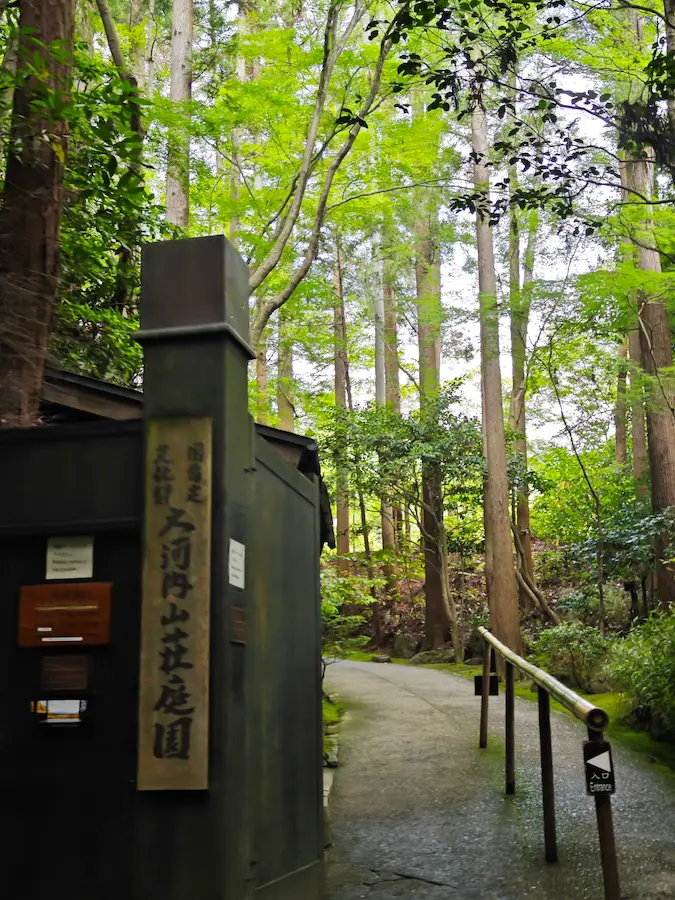
Okochi Sanso Garden
As you head west through the bamboo forest of Arashiyama, you will come to the Ogura mountain. There you will find the entrance to Okochi Sanso Garden. Kyoto City Official Travel Guide Okochi Sanso Garden is a mountain villa garden located in Saga. It was painstakingly created over a 30-year period by renowned Showa-era actor…
-
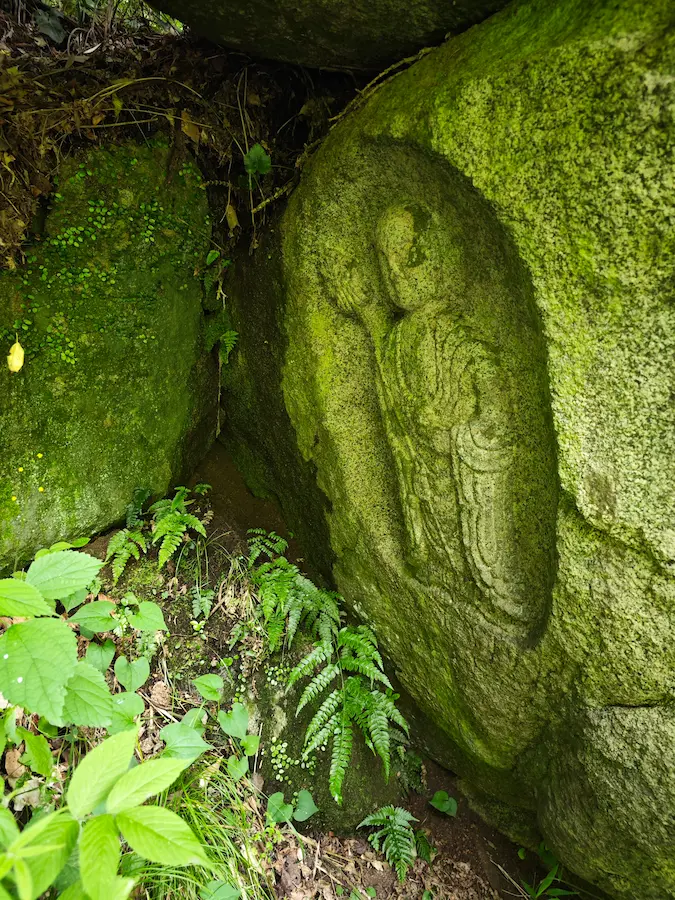
Gansenji Joruriji Hiking
Gansenji Joruriji Hiking is one of the best light hikes that can be done as a day trip from Kyoto. Both Gansenji Temple and Joruriji Temple are located in the mountains of Kizugawa City, near Nara, and offer important cultural assets and national treasures, including buildings and Buddhist statues dating from the Heian and Kamakura…
-
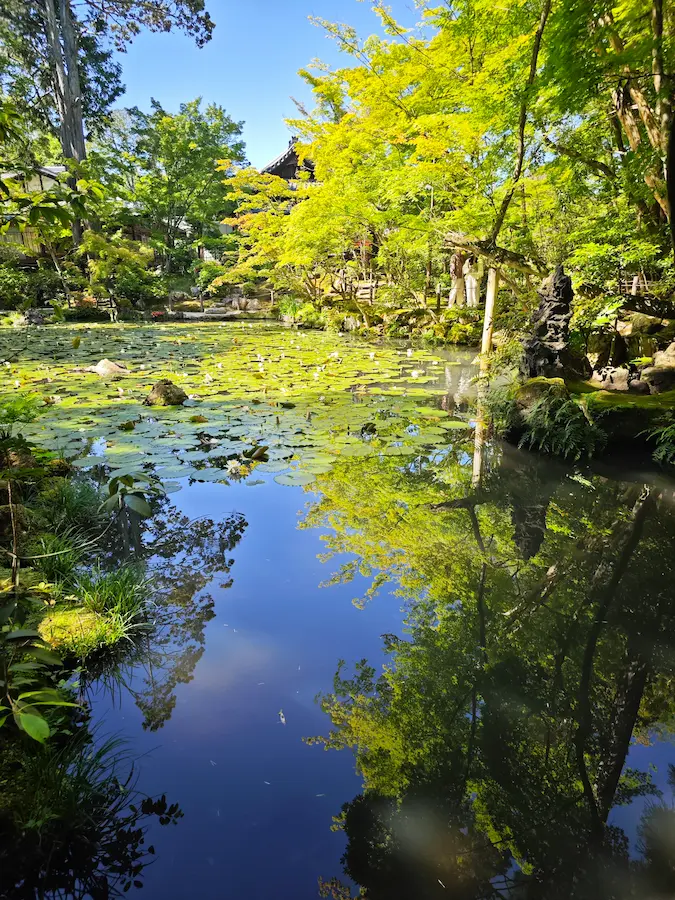
Tenju-an Temple
Tenju-an Temple, a sub-temple of Nanzenji Temple, is a historic Zen temple in the Sakyo Ward of Kyoto City. It belongs to the Rinzai sect’s Nanzen-ji branch. The temple was founded in 1339 during the early Northern and Southern Courts (Nanbokucho) period. It was established by Kokan Shiren, the 15th abbot of Nanzenji, with the…
-
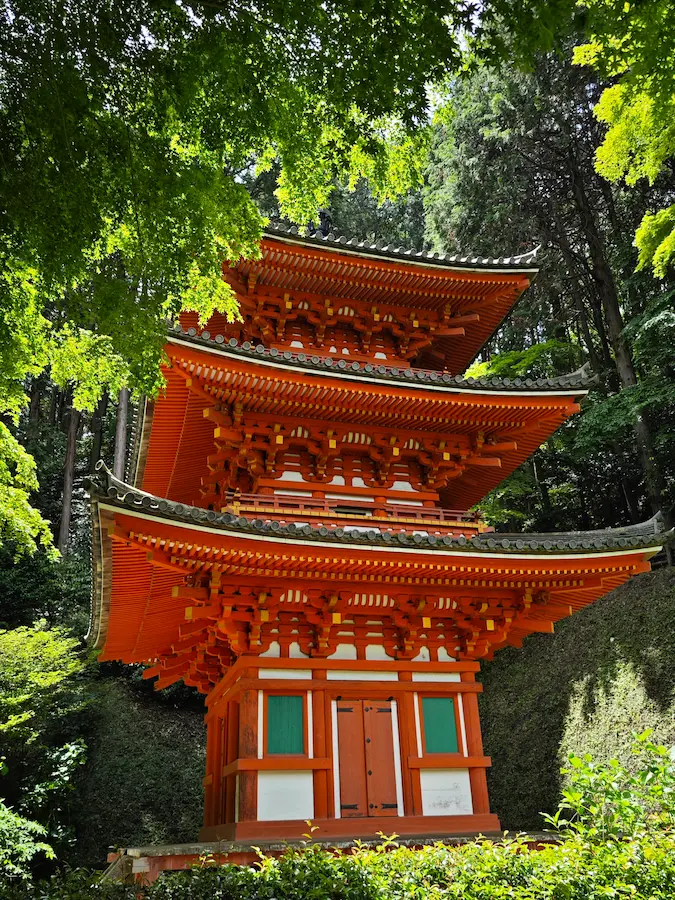
Gansenji Temple
Gansenji Temple: A Tranquil Sanctuary Steeped in History and Culture Nestled in the picturesque hills of Kizugawa City, Kyoto Prefecture, Gansenji Temple is a serene sanctuary surrounded by beautiful nature. Renowned for its exquisite architecture, stunning gardens, and valuable cultural treasures, this temple offers visitors a profound and moving experience. This article delves into the…
-
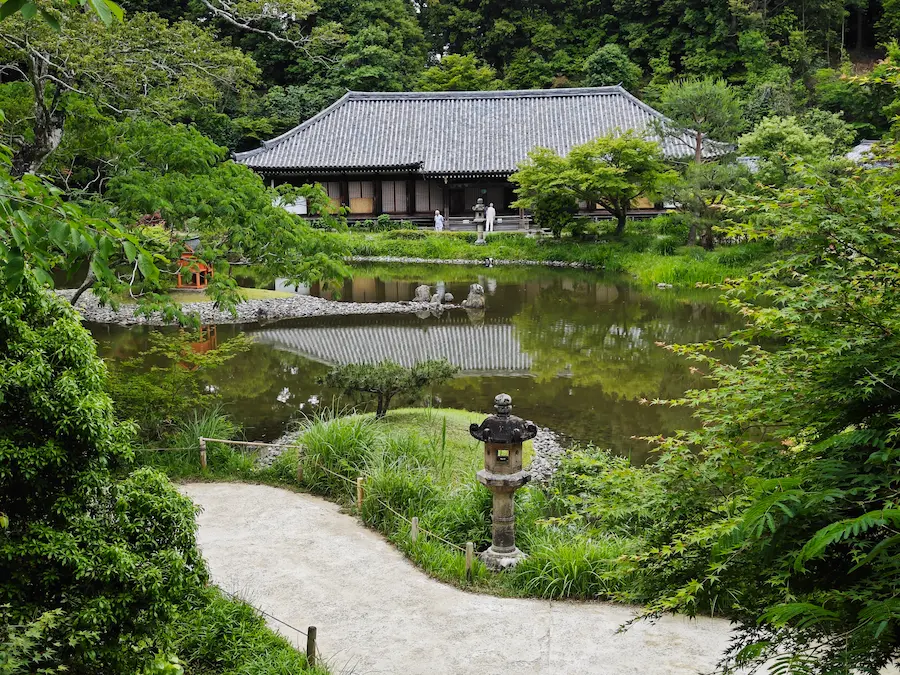
Joruriji Temple
Joruriji Temple, also known as Joruri Temple, is a historic and culturally significant temple located in the Kizugawa City of Kyoto Prefecture, Japan. It is not in the Kyoto City, and it takes about 2 hours by public transport. Joruriji Temple is famous for its beautiful gardens, ancient structures, and the rich cultural heritage it…
-

Koetsuji Temple
Koetsuji Temple is a must-visit for anyone exploring Kyoto. Its blend of art, nature, and tranquility offers a unique experience. Plan a visit in autumn for the best views. Enjoy the serene beauty and rich history of this hidden Kyoto treasure. Located in Kyoto, Koetsuji Temple is a hidden gem. This serene temple offers a…
-
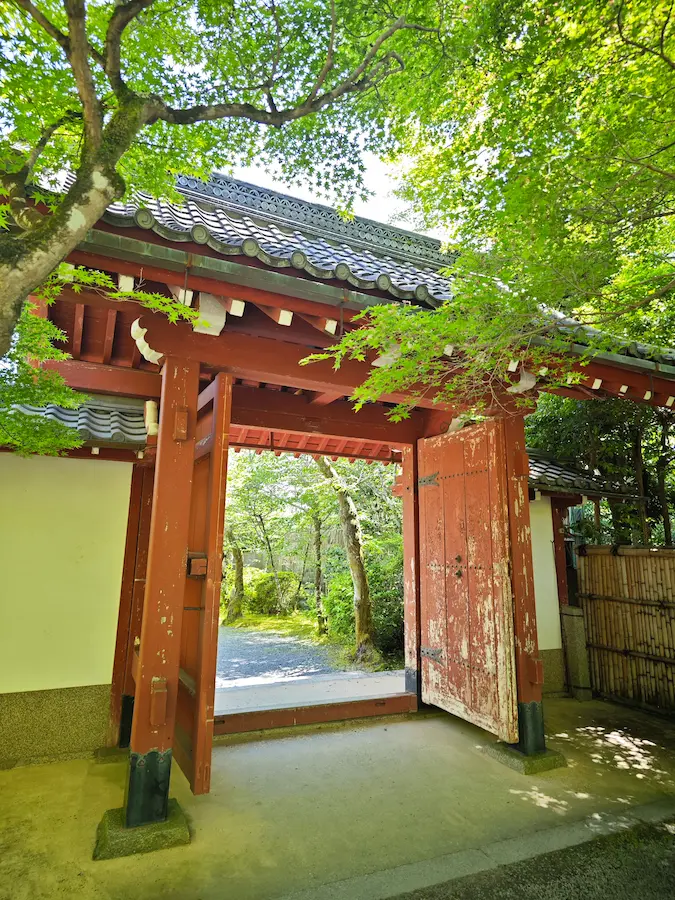
Joshoji Temple
Joshoji Temple offers a serene escape from the bustling city of Kyoto. Its connection to Yoshino Tayu adds historical depth and cultural significance. Whether you’re visiting for the cherry blossoms, autumn leaves, or just a peaceful retreat, Joshoji is a hidden gem worth exploring. Temple’s official WEB site Introduction Kyoto, Japan, is known for its…
-

Genko-an Temple
Genko-an is not just a place of beauty but a journey through history, culture, and spiritual reflection. It’s a must-visit for anyone seeking peace and understanding in the heart of Kyoto. Temple’s official WEB site Discover Genko-an Temple in Kyoto: A Haven of Serenity and Tradition Introduction to Genko-an Genko-an, located in Kyoto, is famed…
-
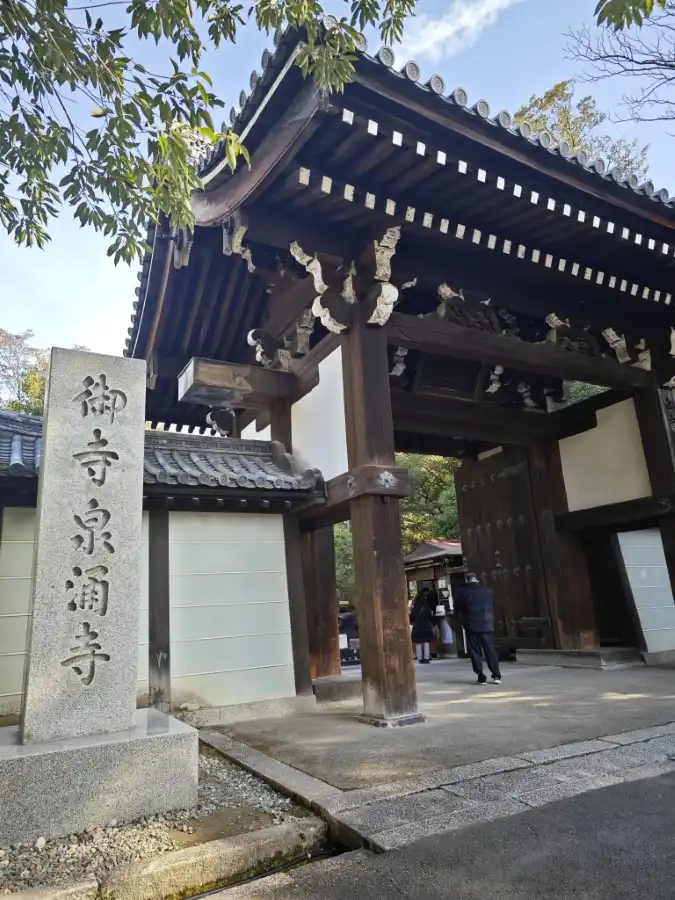
Sennyuji Temple
Nestled in the serene Higashiyama district of Kyoto, Sennyuji Temple, known as “Mitera,” offers a tranquil retreat. Founded in the 9th century, this temple is a significant site for cultural heritage and historical art. This temple is the head temple of Sennyuji Sect of Shingon School of buddhism. Official WEB site Historical Significance Sennyuji has…
-

Jikishian Temple (直指庵)
Discover Kyoto’s hidden treasure, Jikishian Temple, nestled in the serene hills of Sagano. Founded in 1646, this historic site reveals the rich legacy of Obaku Zen. Renewed during the Edo period, it boasts a reed-thatched main hall, Aiai Jizo statues for luck in marriage, and vibrant seasonal foliage, especially during fall. Embrace the tranquility of…
-
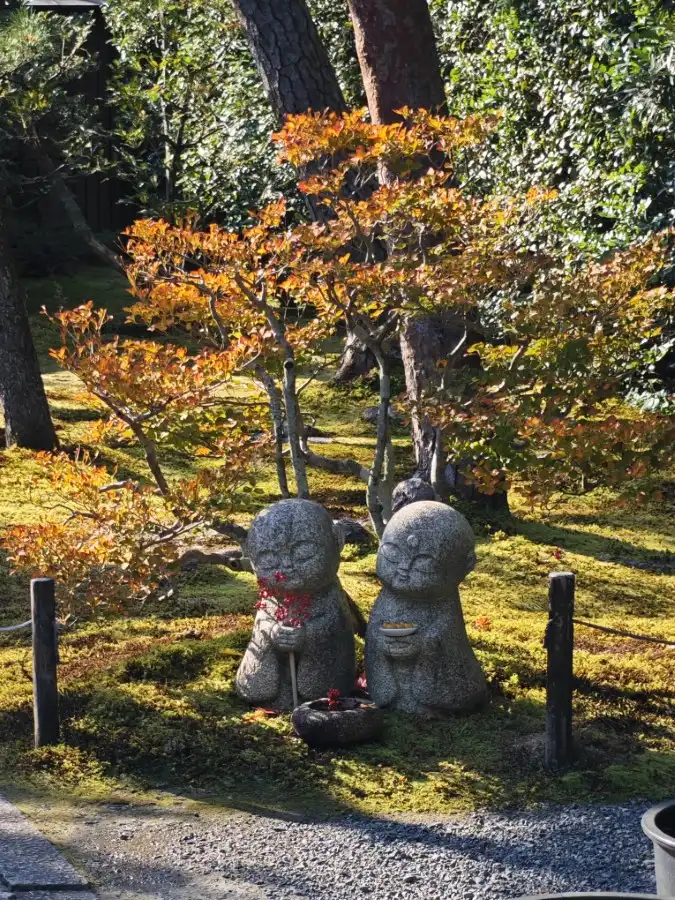
Daiou-in Temple, Myoshinji (大雄院)
Daiou-in Temple, nestled within the serene grounds of Myoshin-ji Temple in Kyoto, beckons visitors with a rich history dating back to 1603. Founded by Ishikawa Mitsutada in memory of his ill-fated father, the temple unfolds a captivating tale of love and political intrigue. Mitsutada’s mother, Okame-no-Kata, caught the eye of Tokugawa Ieyasu, resulting in the…
-
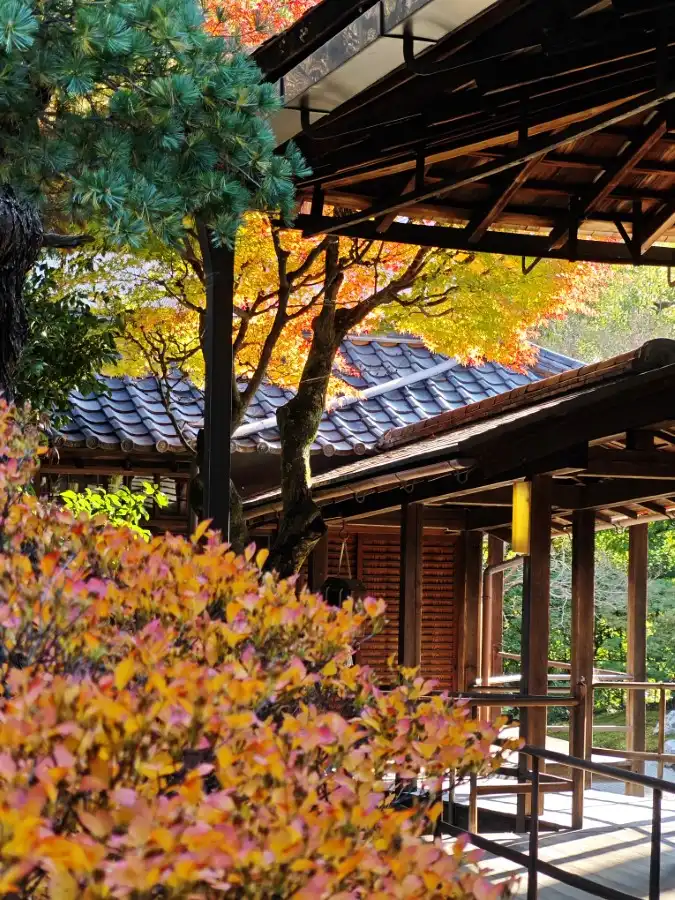
Daishin-in Temple (大心院), Myoshinji
Nestled within the historic Myoshinji Temple complex in Kyoto, Daishin-in Temple beckons as a hidden gem. Operating a unique lodging house, it retains the essence of its past when monks from across Japan sought refuge here. Open year-round to visitors, Daishin-in boasts a rich history dating back to 1479. The main hall, entrance, and a…
-
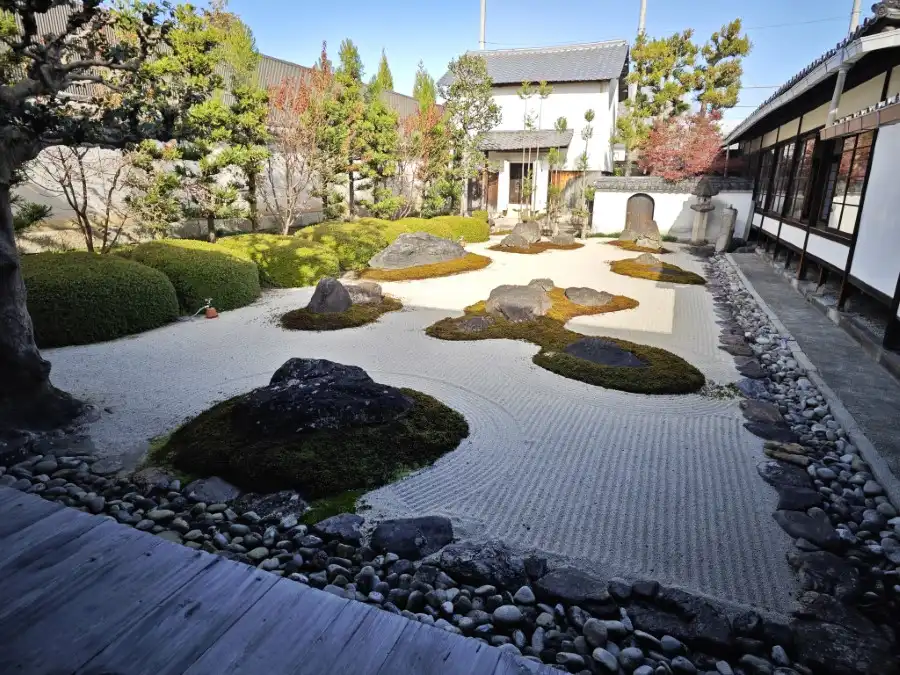
Myorenji Temple (妙蓮寺)
Nestled in Kyoto, Myorenji Temple, founded in 1294, is a sanctuary of tranquility and cultural richness. As the head temple of the Honmon Hokke school of Buddhism, it boasts a storied past marked by resilience against attacks in 1536. Rebuilt in 1542 and relocated by Toyotomi Hideyoshi in 1587, the temple now stands as a…
-
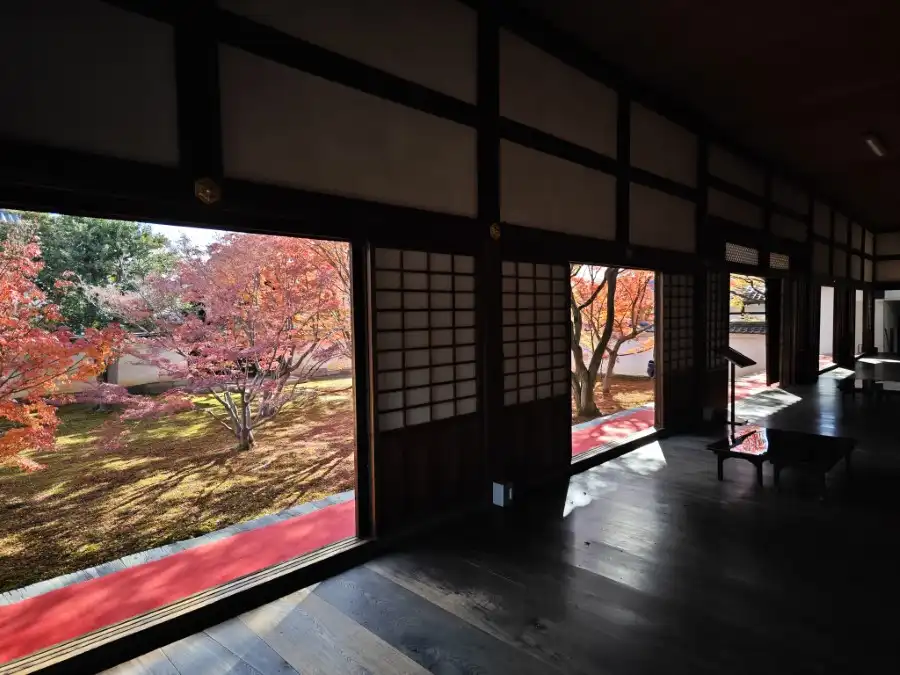
Myokakuji Temple (妙覺寺)
Immerse yourself in Kyoto’s historical tapestry at Myokakuji Temple, founded in 1378 and now a tranquil haven. Relocated in 1583 by Toyotomi Hideyoshi, this temple is a gem among the “Kyoto Nichiren Shu Meisho Sanguzan.” With ties to renowned figures like Ashikaga Yoshiteru and Date Masamune, the temple served as a retreat for Nobunaga and…
-
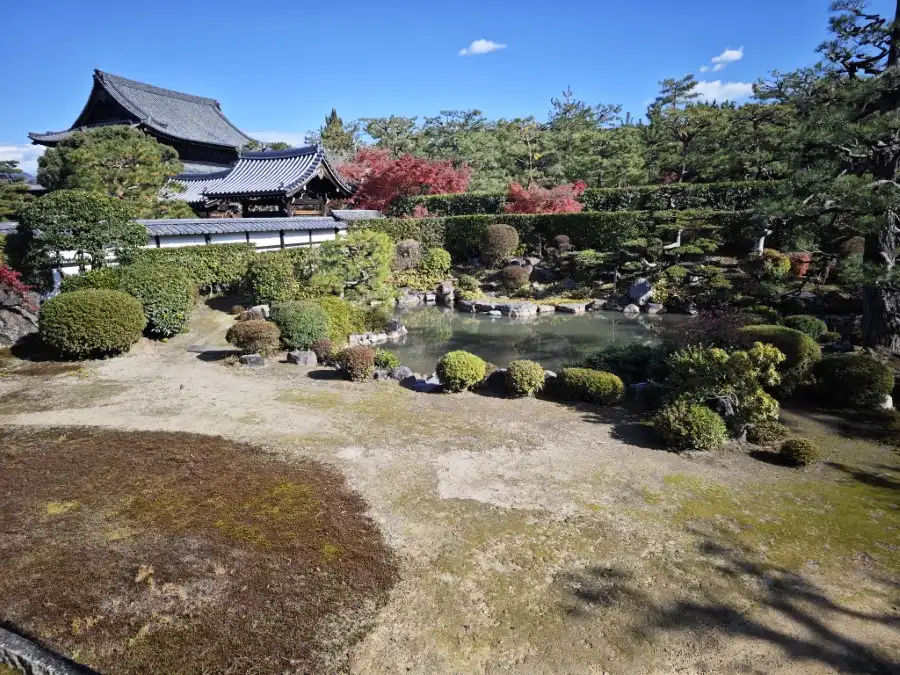
Kyushoin Temple (久昌院), Kenninji
Kyushoin Temple is one of the sub-temples of Kenninji Temple and is located in the precincts of Kenninji Temple. It is the family temple of the Okudaira clan, founded in 1608 by Nobumasa Okudaira. He was the first lord of the Kano Han. It is said that Kyushoin was named after Nobumasa’s Buddhist name. This…
-
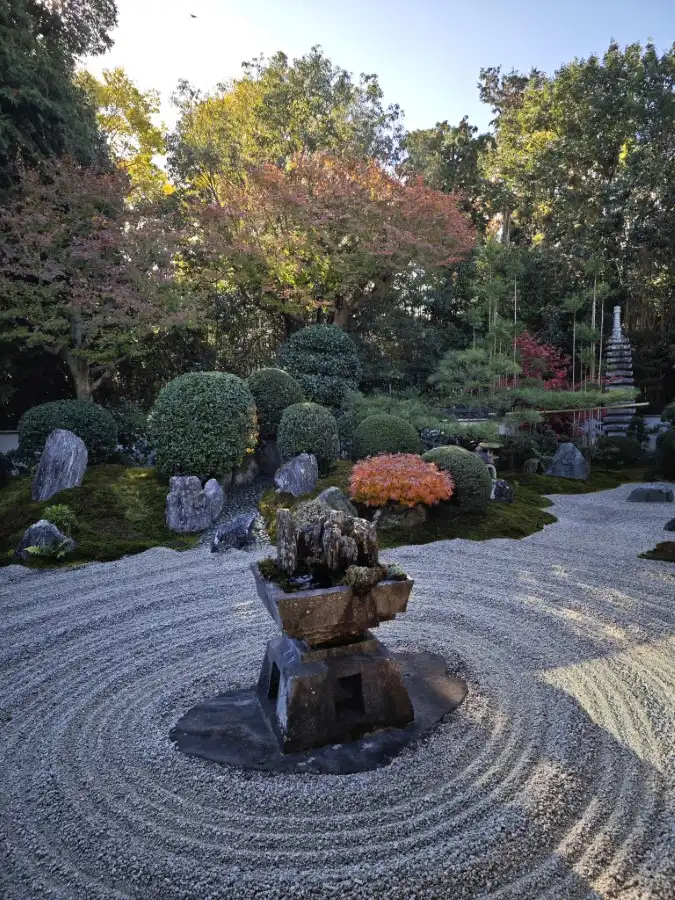
Reiun-in Temple, Tofukuji (霊雲院)
Reiun-in, nestled is a serene temple that encapsulates the essence of Japanese tranquility. The temple grounds boast meticulously manicured gardens, where lush greenery surrounds traditional architecture. A sense of harmony pervades the air as visitors explore the carefully designed spaces, adorned with symbolic elements. Reiun-in stands as a testament to Kyoto’s rich cultural heritage, offering…
-

Fundain Temple (芬陀院), Tofukuji
If you are tired of the crowds at Tofukuji Temple, visit the nearby Fundain Temple, one of Tofukuji’s sub-temples. You can enjoy matcha green tea in front of a tranquil Zen garden. This temple is open to the public all year round. Fundain Temple is known as “Sesshu Temple” because of its famous garden by…
-
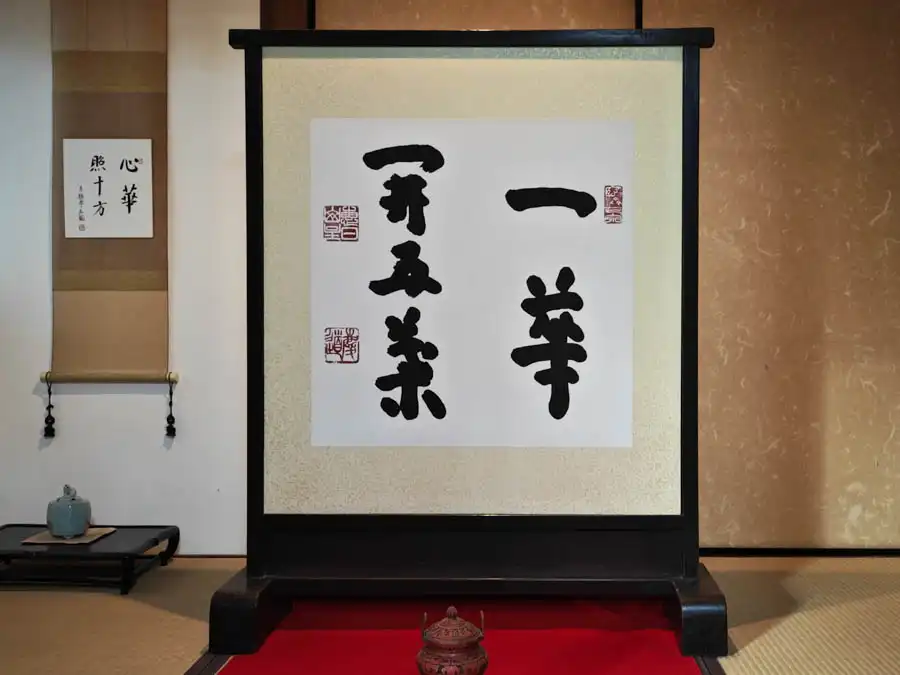
Ikka-in Temple, Tofukuji (一華院)
Nestled on the route to Tofukuji Temple, Ikka-in is a hidden sub-temple founded in 1382 by Zen master Tozan. Unveiling its secrets during the autumn leaves season, the temple welcomes visitors to explore its serene charm and engage in tea ceremonies. The name “Ikka-in” stems from the Zen teaching of unfolding one’s mind like a…
-
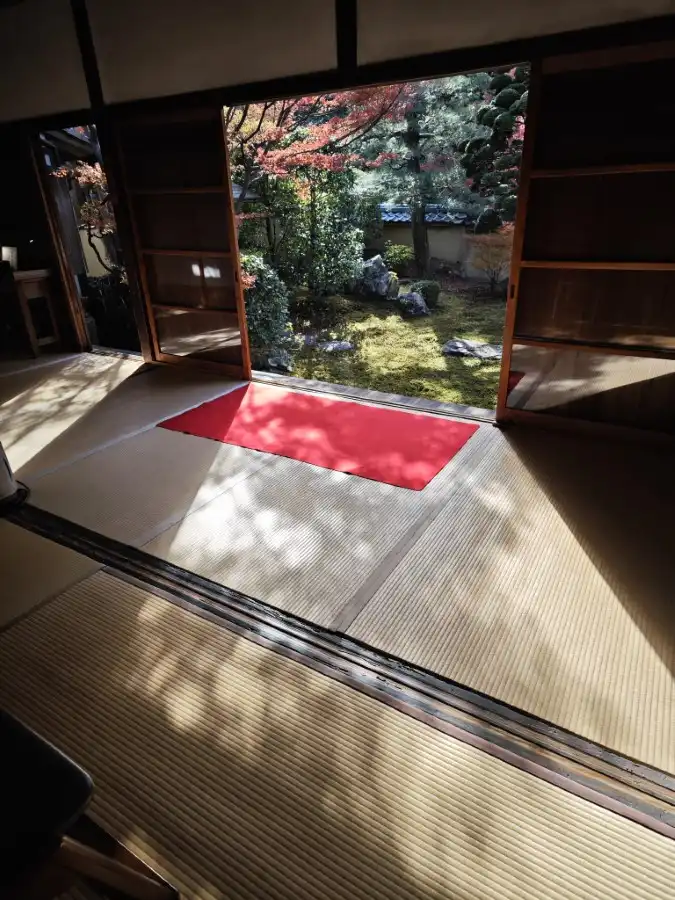
Tentokuin Temple (天得院), Tofukuji
Tentokuin Temple is one of the sub-temple of Tofukuji Temple. The temple was founded by monk Mumu Issei, the 30th abbot of Tofukuji Temple, during the Shohei Era (1346-1370) of the Northern and Southern Dynasties. At that time, the temple was one of the five important sub-temples of Tofukuji Temple and boasted of its prosperity.…
-
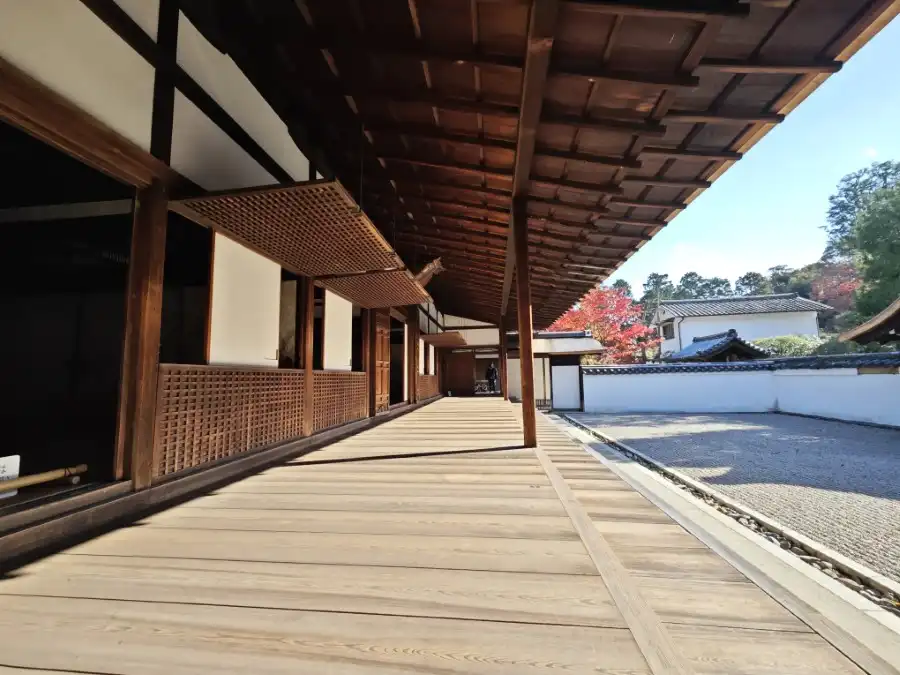
Ryogin-an, Tofukuji (龍吟庵)
Nestled near Tofukuji Temple, Kyoto’s Ryogin-an beckons with historic charm. Home to Daimin Kokushi’s residence, it boasts Japan’s oldest Hojo, a national treasure with elegant shoin-zukuri and shinden-zukuri styles. The Kaisando-Do holds Daimei Kokushi’s statue and remains, designated as Important Cultural Properties. Renowned for its three gardens, Shigemori Mirei’s creations captivate, from the ceremonial “Garden…
-
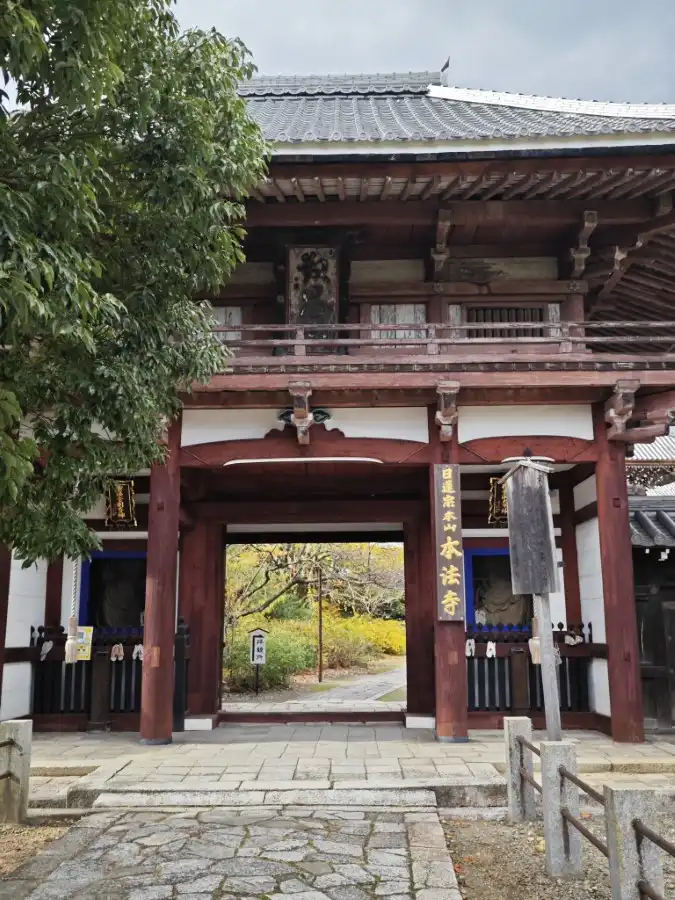
Honpouji Temple (本法寺)
If you are walking along Ogawa Dori in Kyoto, Honpouji Temple is the Niomon gate facing the street. It is a temple with a quaint appearance. Muromachi period Nisshin Shonin (1407-88), a Nichiren Shoshu priest active in the Muromachi period (1336-1573), founded Honpouji Temple. It is the head temple of Nichiren Shoshu. The exact date…
-
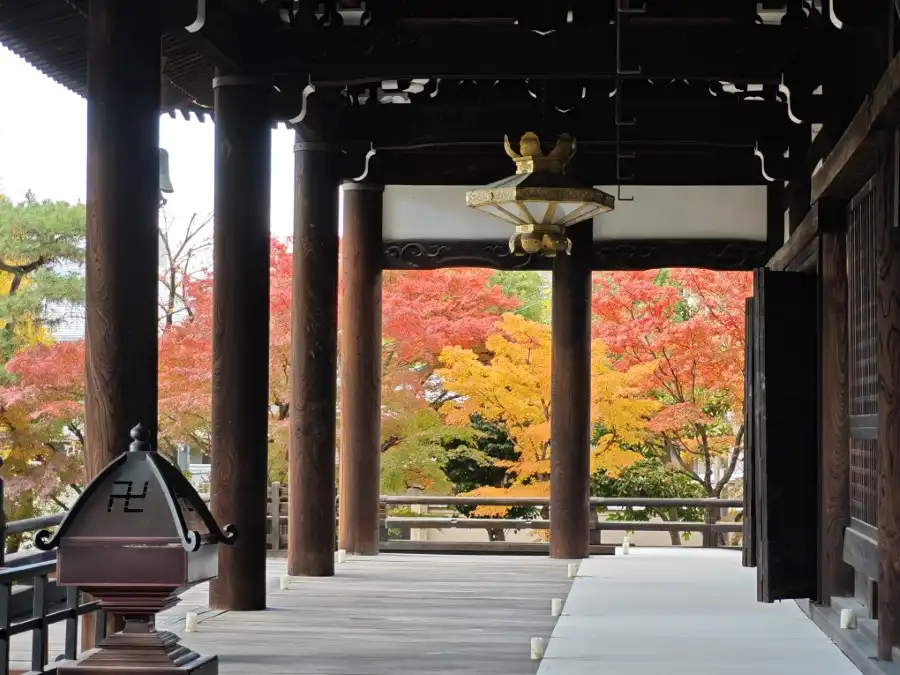
Myokenji Temple (妙顯寺)
Embark on a journey through history and spirituality at Myokenji Temple, the heart of Nichiren Shu in Kyoto’s Kamigyo-ku. Founded in 1321 by Nichizo, a missionary bestowed land by Emperor Godaigo, the temple became the fundamental Hokke school sanctuary in Kyoto. Despite challenges, including attacks by the Hieizan Enryakuji sect, the temple persevered. Today, Myokenji…
-
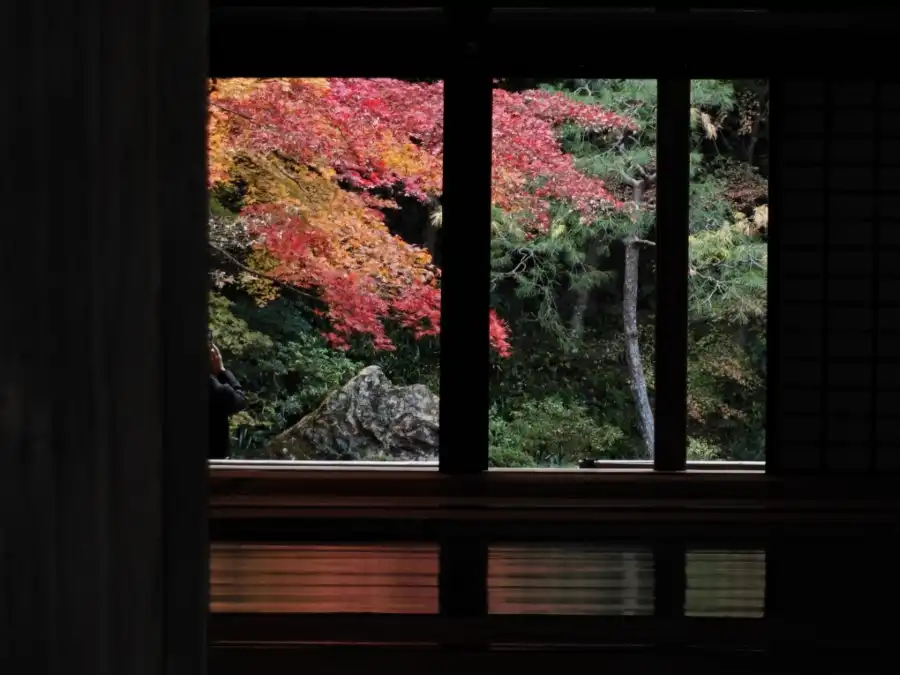
Nanzenin Temple, Nanzenji (南禅院)
Nanzenin Temple, nestled on a hill from Nanzenji Temple, Kyoto, bears historical significance as the former detached palace of Emperor Kameyama, who retired to become a Buddhist monk in 1289. The entrance, reached through the Suirokaku water bridge, unveils a serene hall and an enchanting garden. Designed in the late Kamakura period, the garden exudes…
-
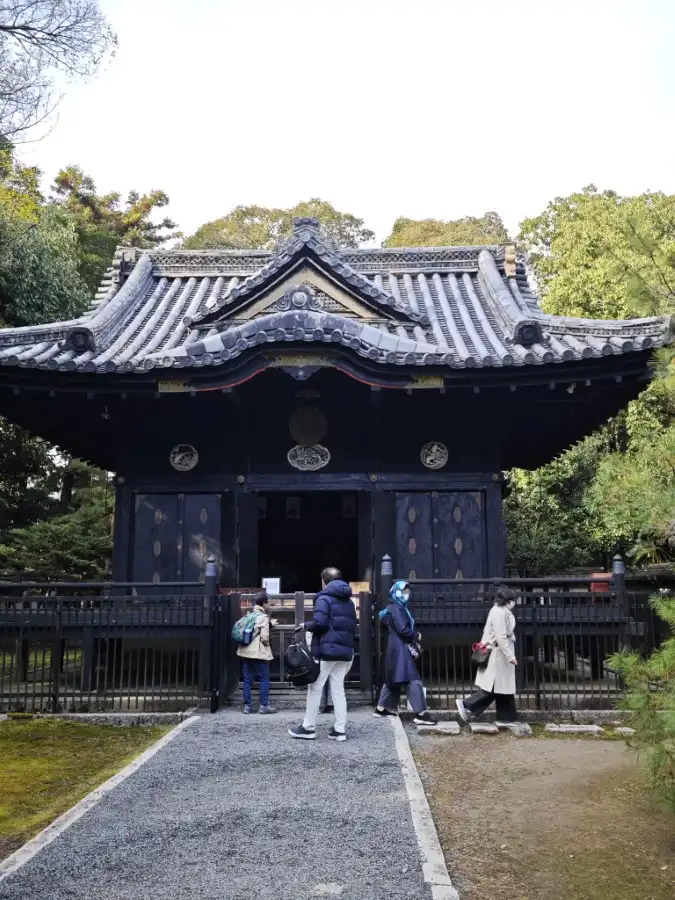
Konchi-in Temple, Nanzenji (金地院)
Nestled within Kyoto’s historic treasures, Konchi-in Temple, a sub-temple of Nanzenji, is a haven of rich history and cultural significance. Established in the early Edo period, it played a pivotal role in Tokugawa Ieyasu’s administration, earning the monk Ishin Suden the moniker “The Prime Minister in Black.” The temple boasts an Important Cultural Property, the…
-
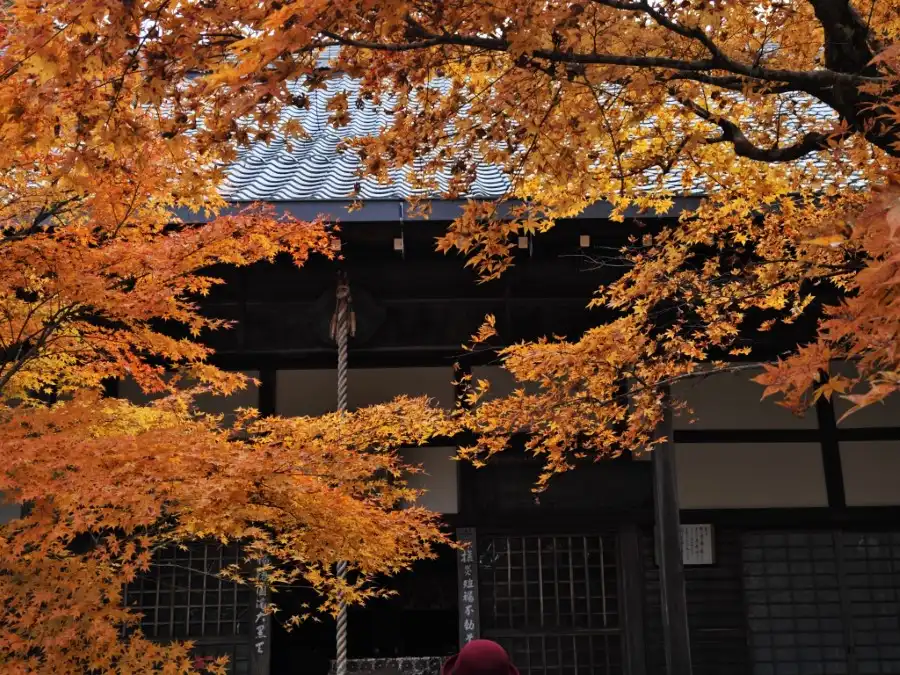
Saishoin Temple, Nanzenji (最勝院)
Nestled tranquilly north of Nanzenji temple, Saishoin Temple invites you to a serene haven enveloped by nature’s embrace throughout the seasons. Dedicated to the revered Kamakura-period high priest, Koma Dochi, this temple exudes historical significance. Serving as the guardian deity of Nanzenji Temple, Saishoin holds a cherished position in the hearts of worshipers, especially renowned…
-
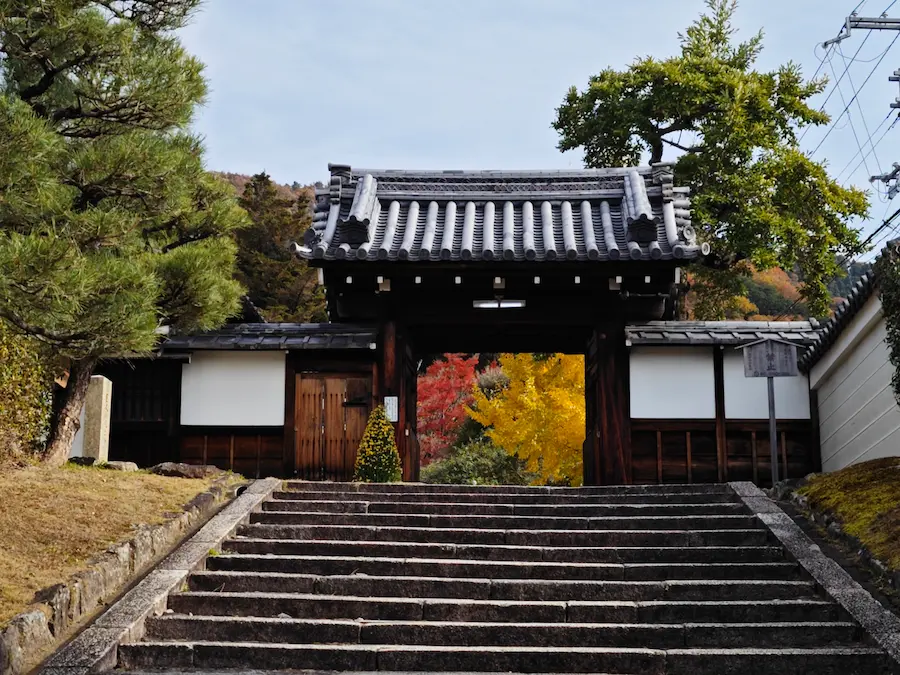
Reikanji Temple (霊鑑寺)
Nestled in Kyoto’s tranquility, Reikanji Temple unveils its splendor to the public for a fleeting two weeks, revealing a hidden gem seldom explored by foreign tourists. Founded in 1654, this Rinzai sect temple holds imperial lineage, its main hall a gift from Tokugawa Ienari. The exquisite Shoin, once an imperial palace, beckons with its tailored…
-
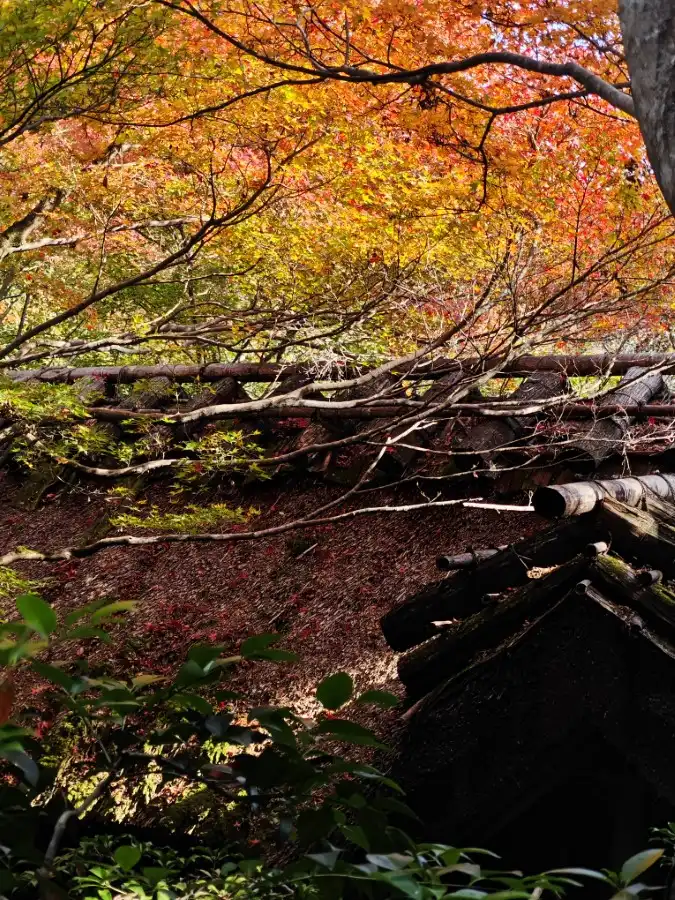
Enrian Temple, autumn leaves (厭離庵)
The Enrian Temple stands out for the beauty of its autumn foliage. The place is known only to a few and is definitely a hidden gem in Kyoto. The Enrian Temple is located on the road from Seiryoji Temple to Nison-in Temple in Sagano. It is not far from Tenryuji Temple, the head temple of…
-
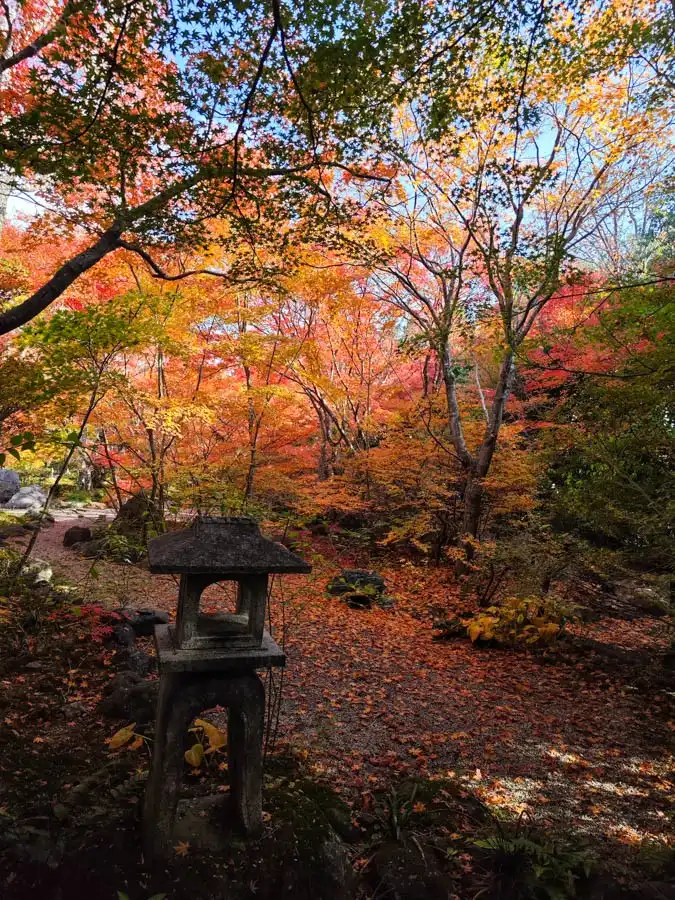
Houkyouin Temple (宝筐院)
Houkyouin is a temple of the Rinzai sect in Sagano, Kyoto. It is located near Seiryoji Temple, known as Saga Shakado. This temple is famous for its beautiful autumn leaves. Although it is an inconspicuous temple, it attracts a large number of visitors during the autumn foliage season. However, there are still very few foreign…
-
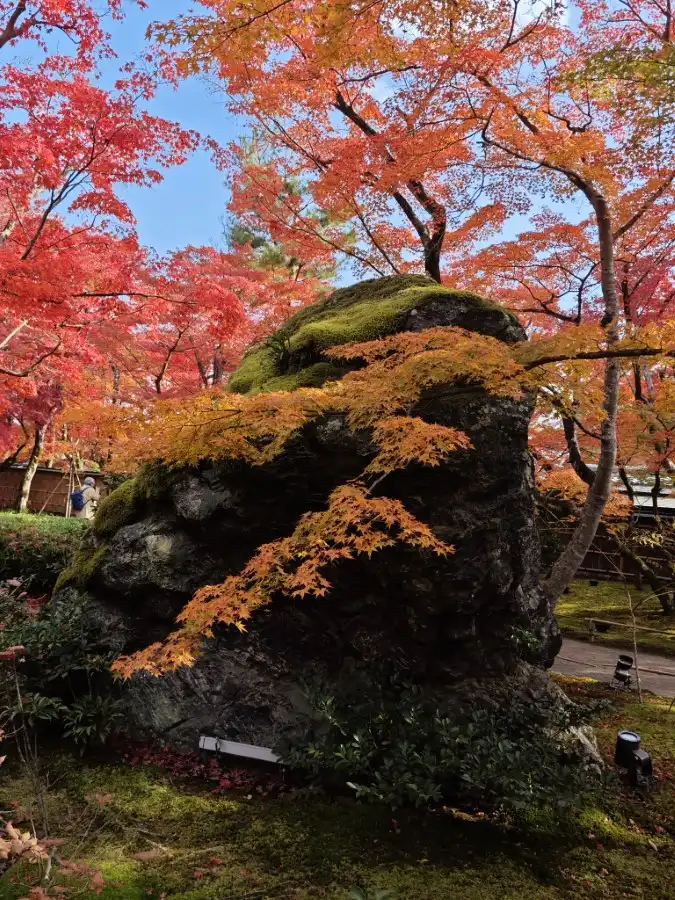
Hogonin Temple, Tenryuji (宝厳院)
Hogonin Temple is a sub-temple of Tenryuji Temple. It is famous for its “Shishiku-no-niwa,” a circular landscape garden with Arashiyama in the background. It is arguably one of the most beautiful gardens in Kyoto. Hogonin Temple is usually closed to the public, but the garden is open to the public during the fall foliage season…
-
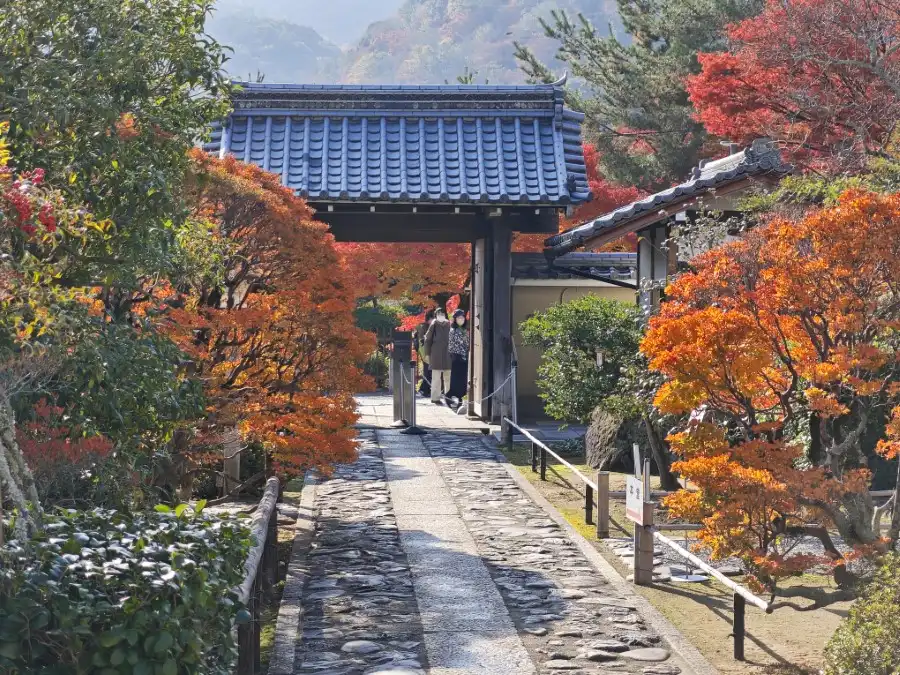
Kogenji Temple (弘源寺), Tenryuji
Kogenji is one of the pagodas of Tenryuji Temple, a World Heritage Site. It is located just north of the Imperial Gate of Tenryuji Temple. It is famous for the standing statue of Bishamonten and the Kosho Garden, a dry landscape garden. Kogenji’s Bishamonten stature is an important cultural property. The Bishamonten statue is open…
-
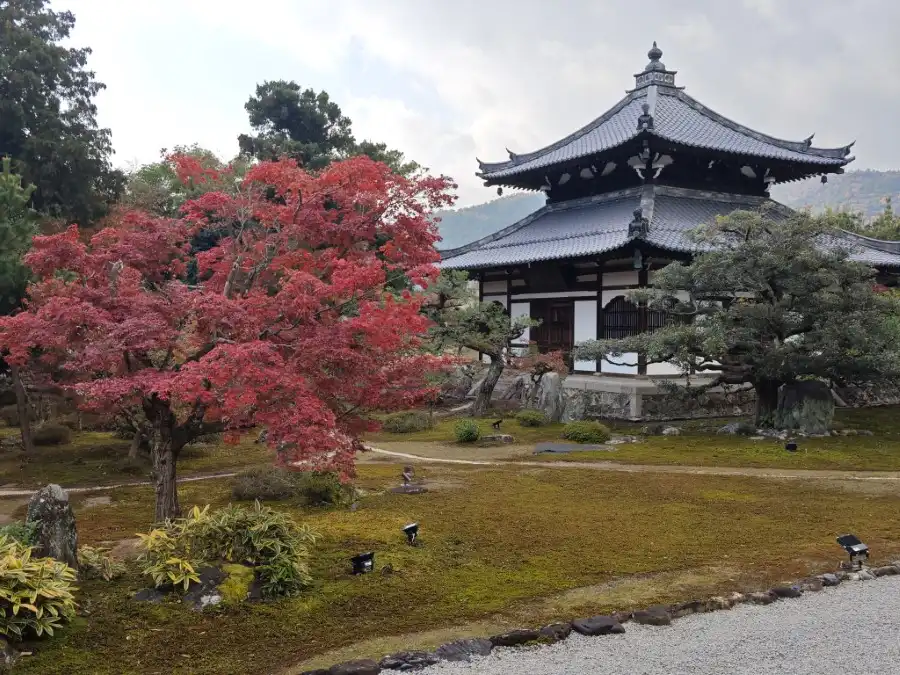
Rokuouin Temple (鹿王院)
Although not far from Arashiyama, where so many tourists visit, Rokuouin is a quiet temple where you will rarely see foreign tourists. Entrance gate The gate to enter the temple is a gabled gate with a tile roof. It is the only Zen temple gate with a main pillar rising to the ridge. The gate…
-
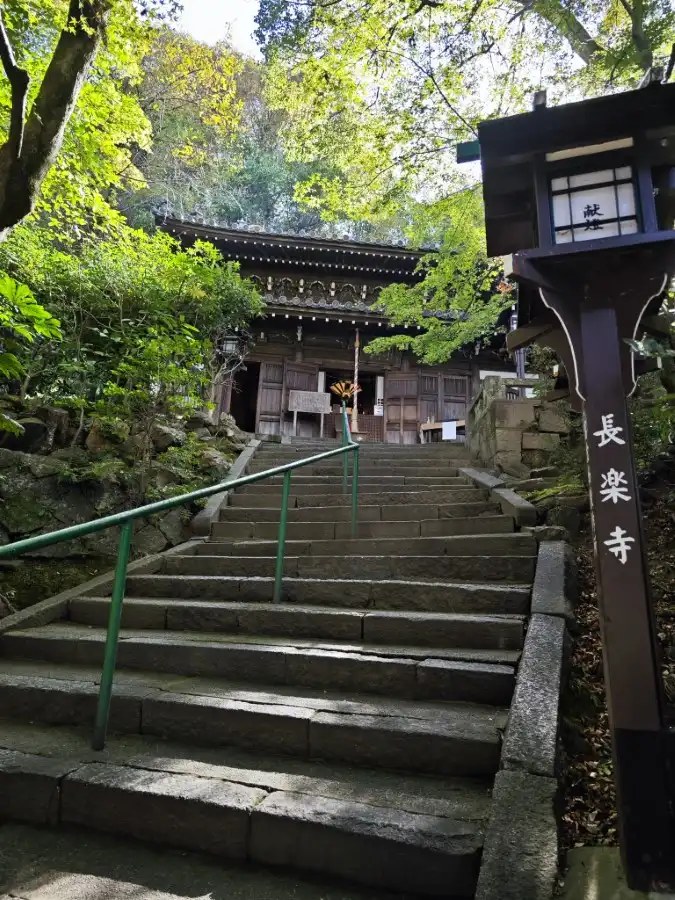
Chorakuji Temple (長楽寺), Kyoto
Chorakuji, a captivating temple in Kyoto, beckons foreign tourists with its enchanting blend of history and spirituality. Nestled amidst Kyoto’s picturesque landscapes, Chorakuji boasts awe-inspiring architecture and serene gardens. Visitors are invited to explore the rich tapestry of Japanese culture through the temple’s symbolic elements and ancient rituals. The tranquil ambiance provides a unique opportunity…
-
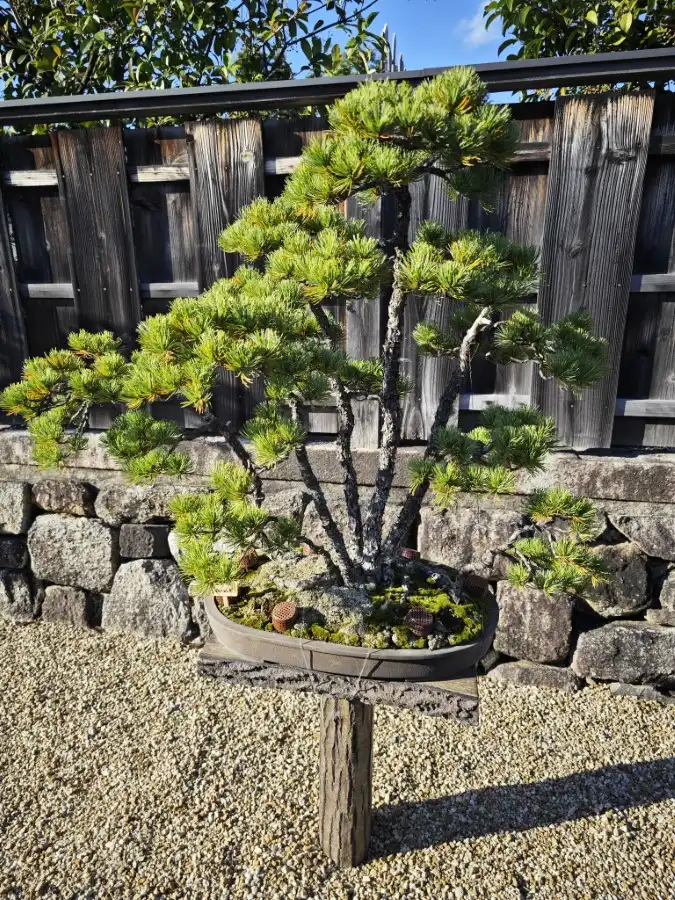
Hoshun-in Temple (芳春院), Daitokuji
Hoshun-in temple is a sub-temple of the Daitokuji Temple. Hoshun-in temple is located at the northernmost point of the Daitokuji temple compound. You find it further back, past the entrance to Daisen-in Temple. Hoshunin is the Buddhist name of Matsu, a regular wife of Maeda Toshiie. He was a feudal lord in the Warring States…
-
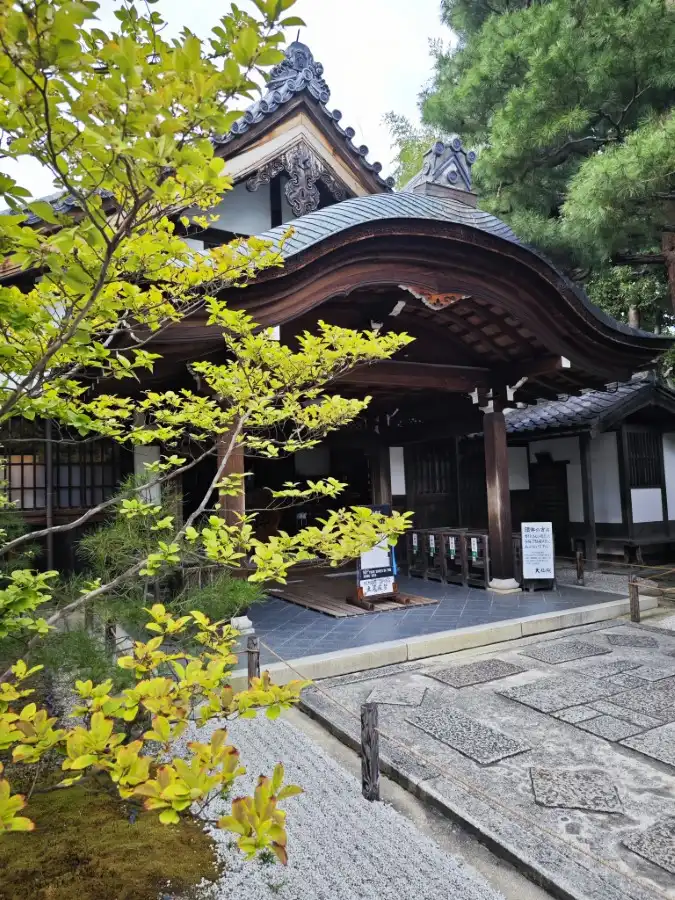
Daisen-in (大仙院), Daitokuji
Daisen-in is the most important sub-temple of Daitokuji Temple. In 1509 Rokkaku Masayori founded Daisen-in. The main hall is the original building. It is one of the oldest remaining Zen sect hojo buildings and is a national treasure. Shoin is an important cultural property. The garden is said to be a rock garden representing Karesansui…
-
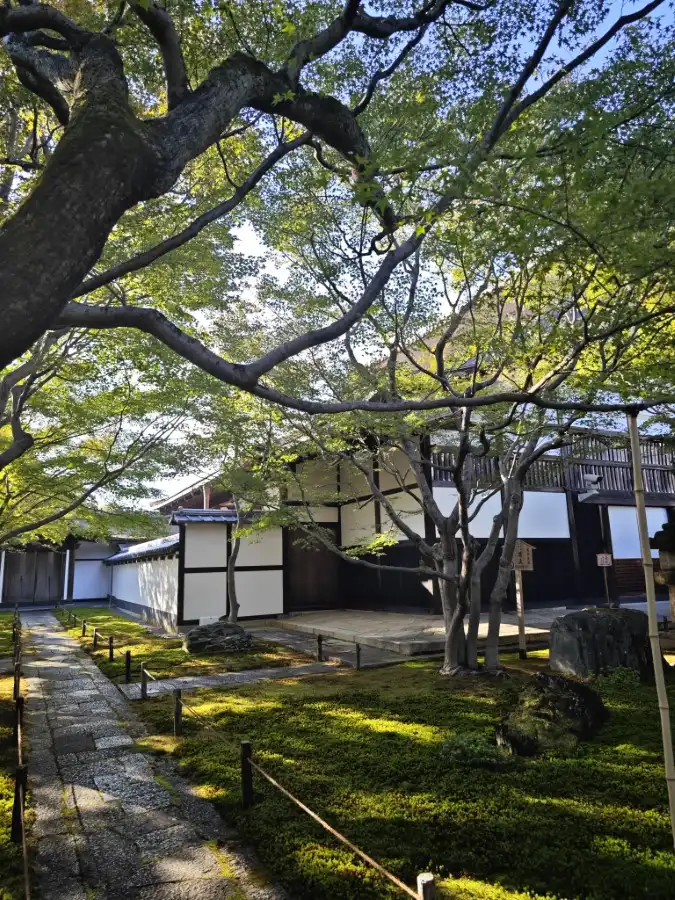
Obai-in temple (黄梅院), Daitokuji
Obai-in temple’s gardens are must see if you have chance. This temple is a real hidden gem in Kyoto. Oda Nobunaga built Obai-an in 1562 as a memorial service for his father, Oda Nobuhide. And it is one of the sub-temples of Daitokuji Temple. After Nobunaga’s sudden death due to the Honnouji Incident, Hideyoshi Hashiba…
-

Ryogen-in (龍源院), Daitokuji
Ryogen-in is a sub-temple of Daitokuji Temple. This temple was founded in 1502 by Yoshimoto Hatakeyama, Yoshinaga Otomo, and Yoshioki Ouchi. It is the oldest sub-temple of Daitokuji Temple. This temple is usually open to the public. The original buildings, the Hojo, Karamon, and Omotemon, are important cultural properties. Kyoto City Official Travel Guide Ryogen-in…
-
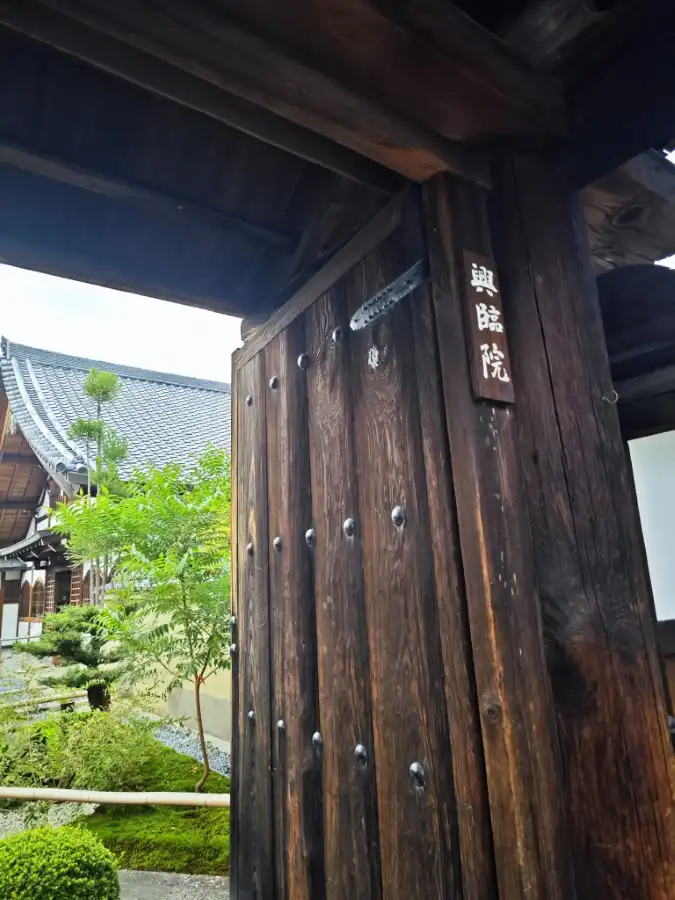
Korin-in (興臨院), Daitokuji
Discover the hidden beauty of Korin-in Temple, a sub-temple of Daitokuji, exclusively open on special days. Established in the 1520s by the Noto Hatakeyama clan, the temple boasts a rich history and cultural significance. The main hall and gates, including the ancient Karamon gate, are cherished cultural properties. Renovated by Toshiie Maeda in 1581, it…
-
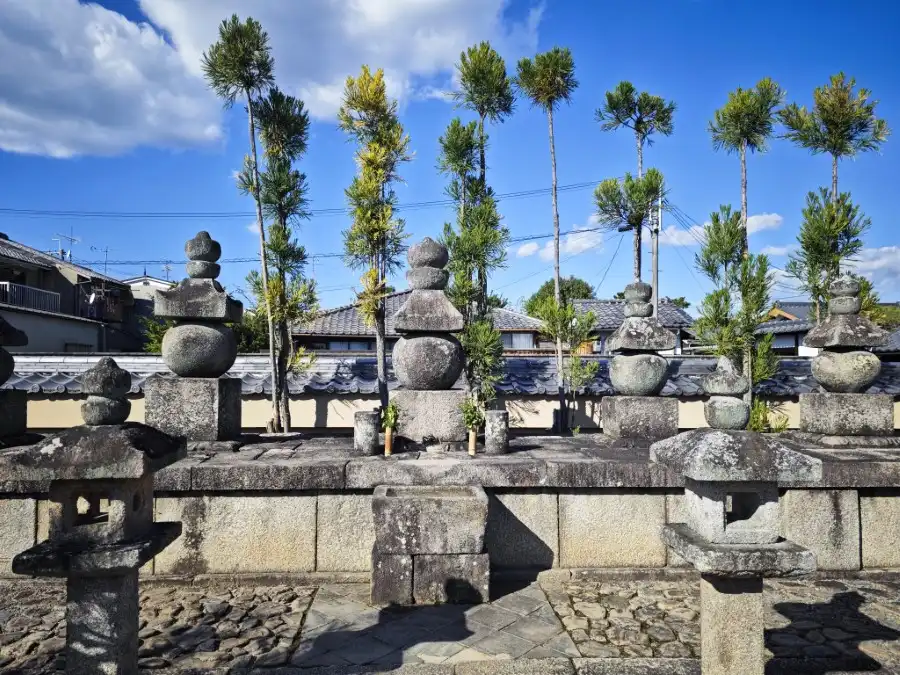
Soken-in (総見院), Daitokuji
Soken-in Temple is a sub-temple of Daitokuji Temple. Toyotomi Hideyoshi built Soken-in Temple in 1583 as a memorial to Oda Nobunaga, who fell in the Honnouji Incident. Toyotomi Hideyoshi was the man who united Japan after the death of Oda Nobunaga, following his legacy. In the main hall is a wooden seated statue of Lord…
-
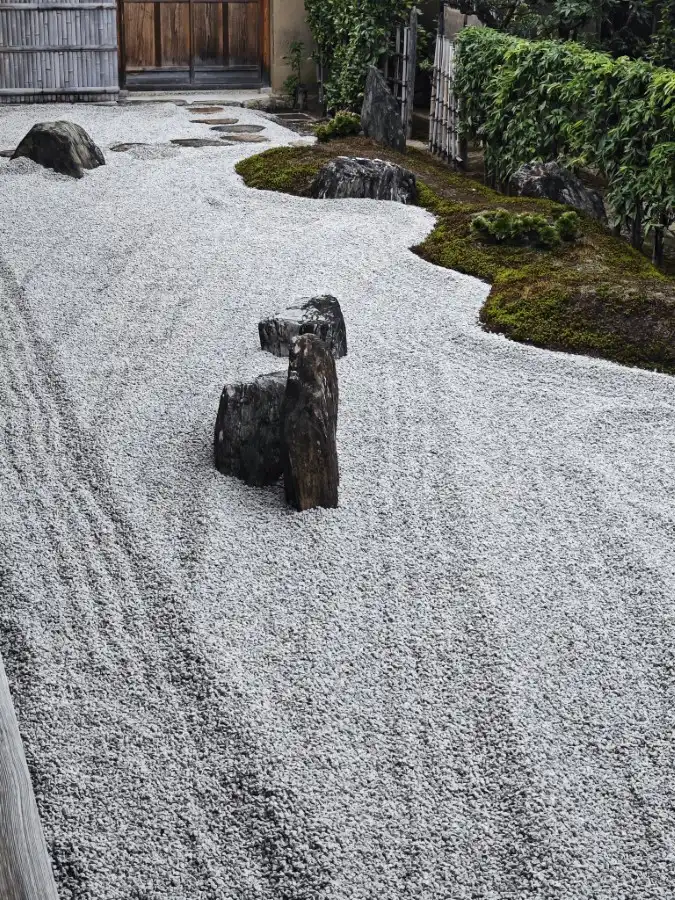
Zuiho-in (瑞峯院), Daitokuji
Zuiho-in is a sub-temple of Daitokuji Temple. This temple is usually open to the public. In 1535, Otomo Sorin, known as a Christian daimyo, built Zuiho-in as the family temple of the Otomo family. The guest hall, front gate, and Karamon gate that remain from the time of its construction are important cultural properties. The…
-
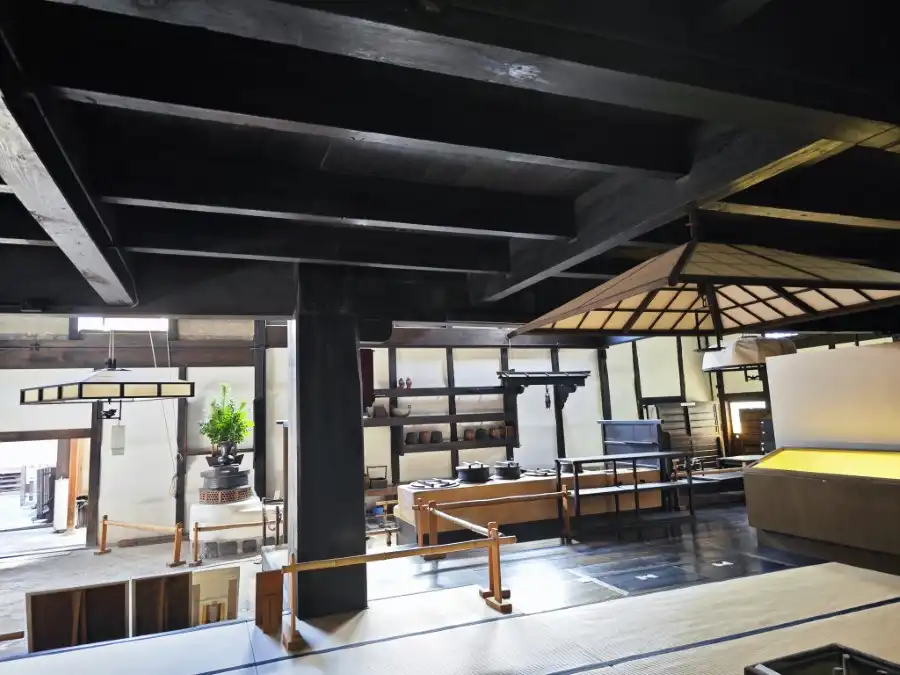
Sumiya (角屋) in Shimabara
Sumiya is an ageya (restaurant/feast facility) that once operated in Kyoto’s Shimabara red-light district (present-day Shimogyo Ward, Kyoto City). Its building has been designated as a national important cultural property. It has been open to the public as the Sumiya Hospitality Culture Museum since 2011. Currently, only the first floor is open to the public.…
-

Wachigaiya (輪違屋)
Wachigaiya is usually closed to the public. Shimabara was the only prestigious red-light district in Kyoto that was officially recognized by the Shogunate. Wachigaiya continues to operate today and is the only tea house/okiya in Japan that has its own Tayu. An okiya is like a production house where maiko and geiko are housed, trained,…
-
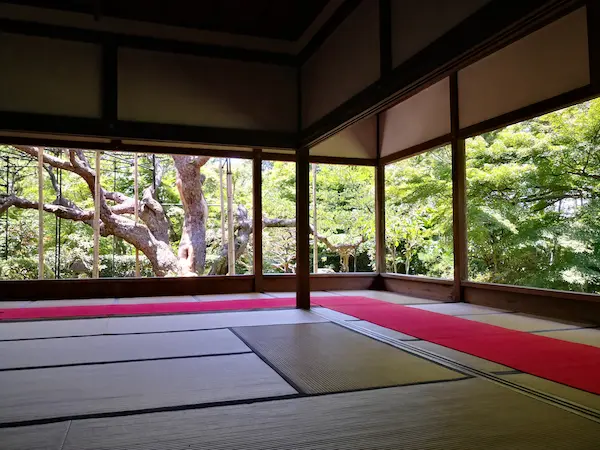
Hosenin Temple (宝泉院) in Ohara
Hosenin temple is a temple of the Tendai sect in Ohara. Together with the Jikkoin Temple, it is a sub-temple of the Shorinin Temple. As visitors enter through the temple gate, they see before them a temple’s symbol, a 700-year-old goyomatsu (five-leaf pine tree). Because it is a large and precious goyomatsu tree, “Hosenin no…
-
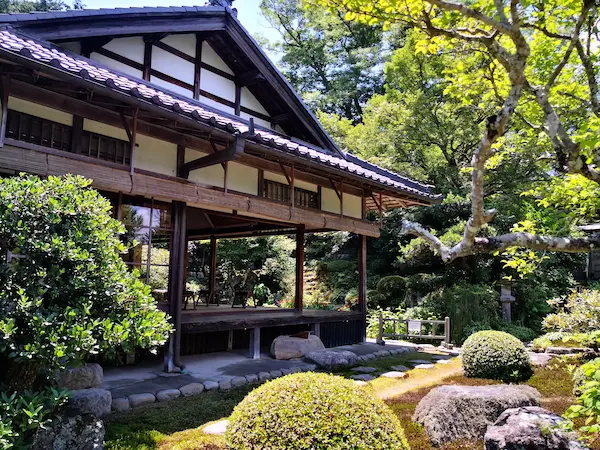
Jikkoin Temple (実光院) in Ohara
Jikkoin Temple in Ohara is a monastery of nearby Shorinin Temple, which used to be the main hall of a sub-temple of Gyozan Taigenji. In addition to this temple and Hosenin Temple, there used to be many other monastery buildings such as Fugenin and Rikakuin. The Temple’s official WEB site tells the history of the…
-

Jakkoin Temple (寂光院) in Ohara
Jakkoin Temple in Ohara is a nunnery of the Tendai sect of Buddhism. This is the temple where Kenreimonin, daughter of Taira no Kiyomori, spent the rest of her life. History of Jakkoin Temple In 594 Prince Shotoku built the temple to mourn the loss of his father, Emperor Yomei. The first abbot was Tamateru…
-
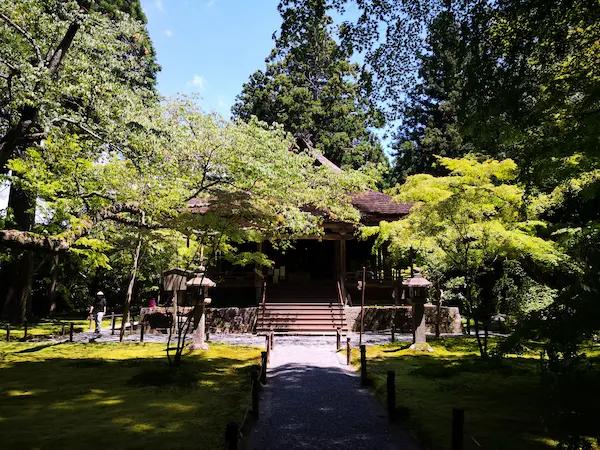
Sanzenin Temple (三千院) in Ohara
Sanzenin Temple was originally built by Saicho during the Enryaku era (782-806) in the Toto Minamidani (東塔南谷) on Mt. Hiei. Since the late Heian period, the temple has been a monzeki, with the prince and imperial family serving as abbots. The location of the temple has moved several times over time, from within Hieizan to…
-
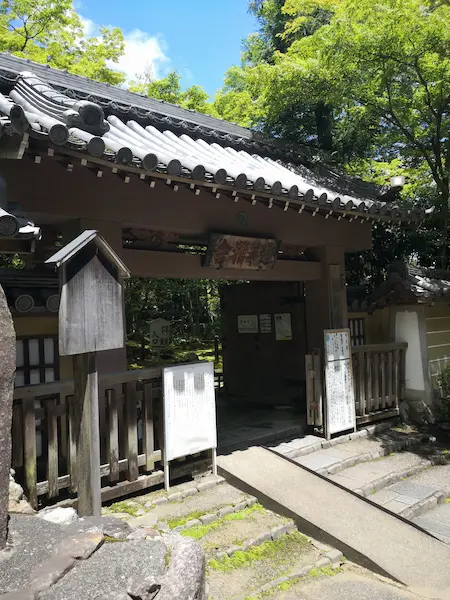
Danrinji (檀林寺)
Near the Gioji Temple, you can find another temple with the tablet of “Danrinji Monzeki”. This is a fake temple constructed in 1964. And it borrowed a name from a historical temple. Original Danrinji Temple disappeared in the middle of Heian period (check it on Wikipedia). Current Danrinji is not even a reconstruction of the…
-
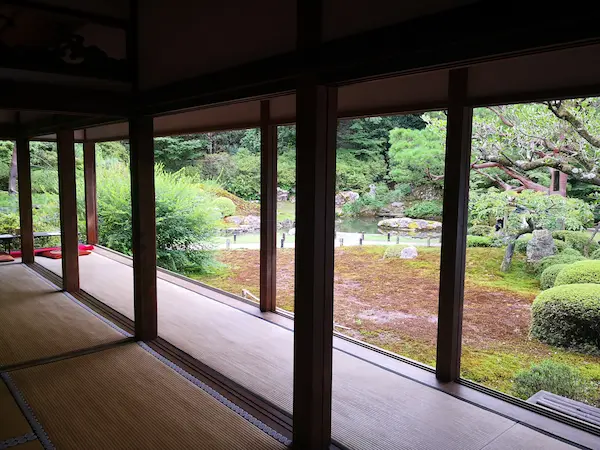
Shorenin Monzeki (青蓮院門跡)
Shorenin Monzeki is one of the three monzeki of Enryakuji Temple on Mt. Hiei (other two is Sanzen-in and Myoho-in). It is now one of the five Kyoto Monzeki of the Tendai sect. It originated from Shorenbo, a monk’s abode on Mt. Hiei, which at that time was the residence of Saicho, Ennin, and other…
-
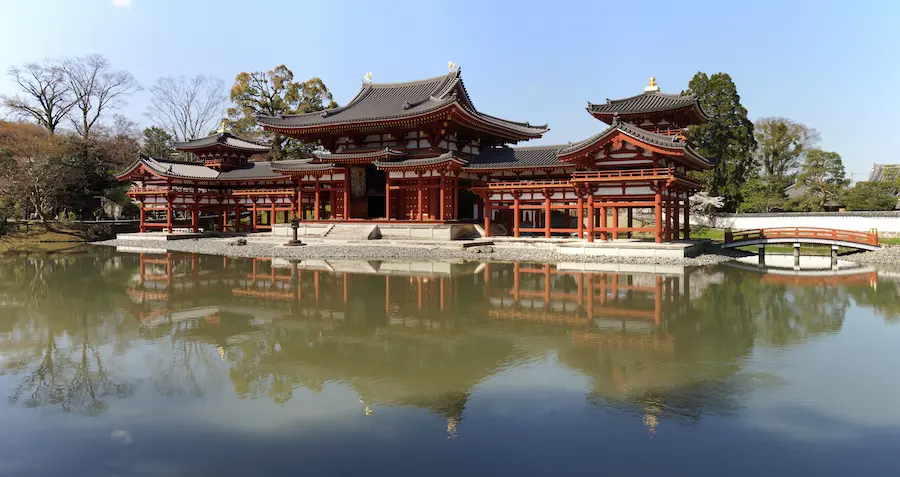
Byodoin Temple (平等院)
Byodoin Temple in Uji represents the beauty of Heian Period. It is a Buddhist temple located in Uji City, south of Kyoto City. It is one of the best preserved national treasures in Japan and a World Heritage Site. (Official WEB site) Byodoin was built in the south of Heian-kyo during the mid-Heian period. The…
-
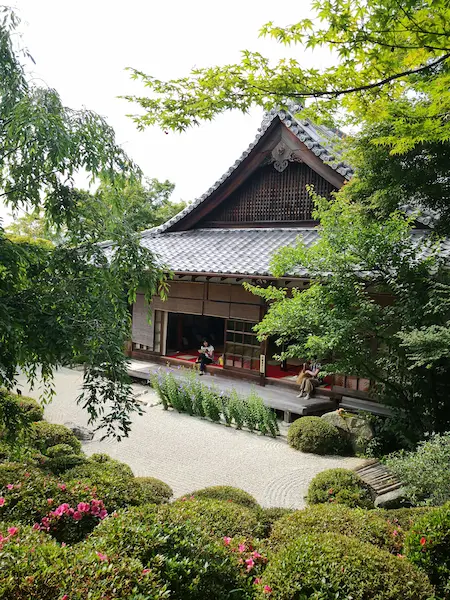
Konpukuji Temple (金福寺)
Explore Konpukuji Temple, a haven for Haiku enthusiasts in Kyoto. Founded in 864 and later revitalized by monk Tesshu in the Edo period, it’s a sacred site for Nanzenji Rinzai Zen Buddhism. Renowned poet Matsuo Basho and Tesshu forged a deep bond here, with a hermitage, “Basho-an,” as testimony. Discover the historic “O-no-Mizu” well and…
-
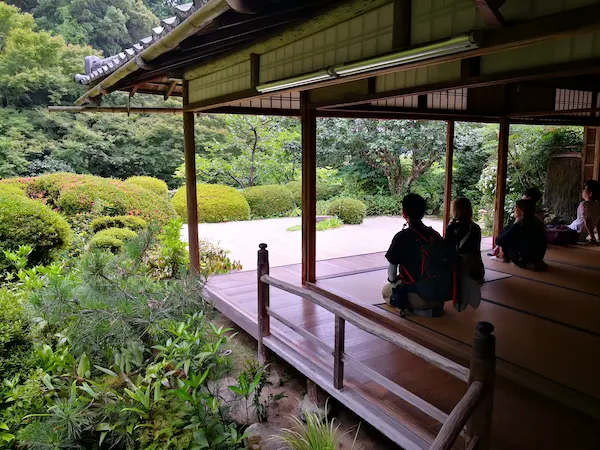
Shisendo Jozanji (詩仙堂丈山寺)
Shisendo is a branch temple of Eiheiji Temple of the Soto sect of Buddhism, where Ishikawa Jozan lived until his death in 1672 at the age of 90. Ishikawa participated in the Battle of Sekigahara in 1600. And quit the warrior’s life after the Summer Battle of Osaka in 1614. Afterwards, Ishikawa wrote poems on…
-
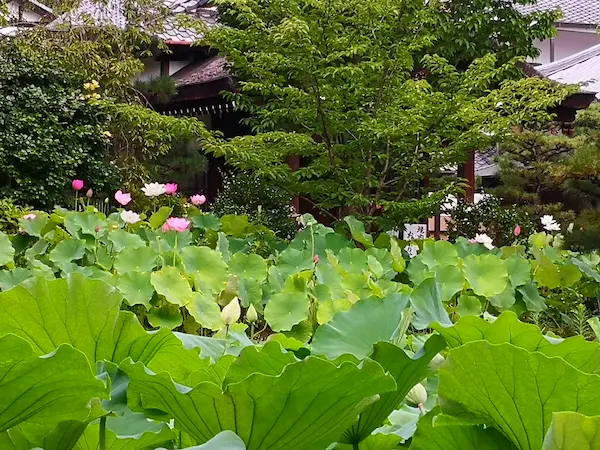
Houkongoin Temple (法金剛院)
Only local people know the flower temple Houkongoin. It is a temple of the Ritsu sect of Buddhism. The Ritsu sect is represented by Toshodaiji temple in Nara, but there are only a few temples. (Temple’s official WEB site) Hokkongoin is located right in front of JR Hanazono Station, making it a very accessible temple.…
-
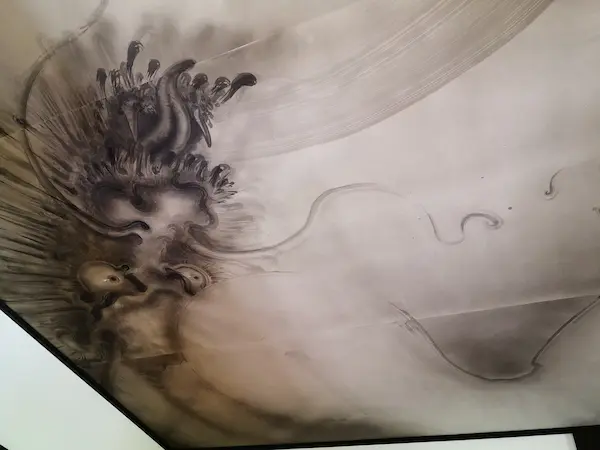
Reigen-in Temple (霊源院)
Reigen-in is one of the sub-temples located in the southeast of the Kenninji temple grounds. It was founded in the Ouei era (1394-1428) by Ryuzan Tokumi, a monk who was invited to found the temple, and his disciple Ichian Ichirin. Reigen-in Temple was the academic core of Kenninji Temple and produced many of the leading…
-
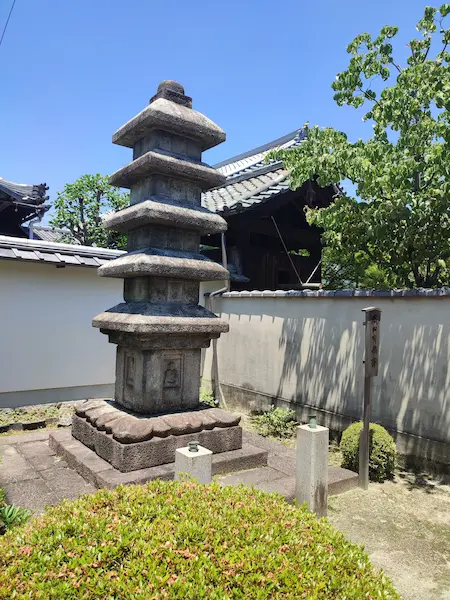
Shoden Eigen-in Temple (正伝永源院)
Shoden Eigen-in is a sub-temple of Kenninji Temple, the head temple of the Rinzai sect of Buddhism. In the Kamakura period, when the temple was founded, there were two temples, Shoden-in and Eigen-an. However, during the confusion caused by the abolition of Buddhism in the Meiji period (1868-1912), Eigen-an was unfortunately uninhabited and was immediately…
-
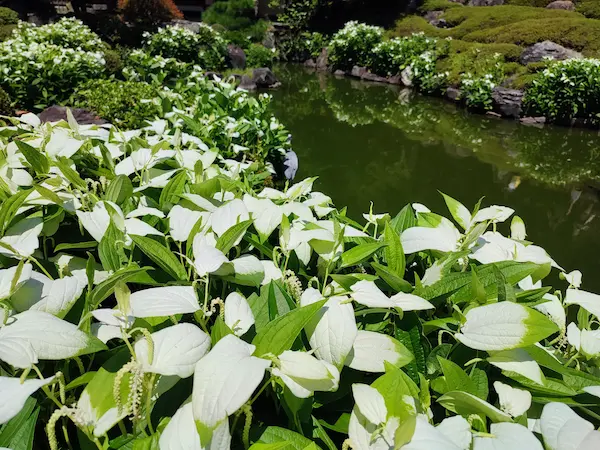
Ryosoku-in Temple (両足院)
Ryosoku-in is a temple of the Kenninji School of Rinzai Zen Buddhism and a sub-temple of Kenninji Temple. The principal image of the temple is the Amida Nyorai. It was built in the Kamakura period as Chisokuin Temple, founded by Zen priest Ryuzan Tokken. After a fire during the Tenmon period (1532 – 1555), the…
-
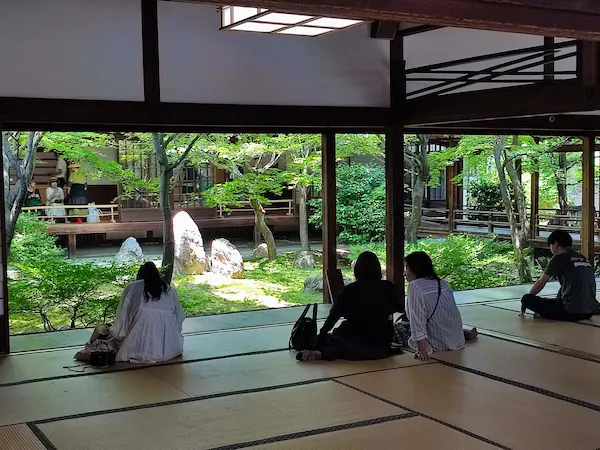
Kenninji Temple (建仁寺)
When you visit Kenninji Temple, please sit on tatami mat and see the tranquil Choontei Garden. You can simply relax or meditate as time goes by. In 1202, Minamoto no Yoriie, the second shogun of the Kamakura period, donated the temple area and founded the Kenninji Temple. Eisai designed the temple, modeling it after Hyakjōzan…
-

Torin-in Temple (Myoshinji) 東林院
You can enjoy Shojin Ryori (zen vegetarian meals) in Torin-in Temple. Torin-in Temple is one of the sub-temples of Myoshinji Temple and is located on the east side of the temple grounds. The temple is usually closed to the public, but you can visit there during some seasonal festivals and on lunch events. The main…
-
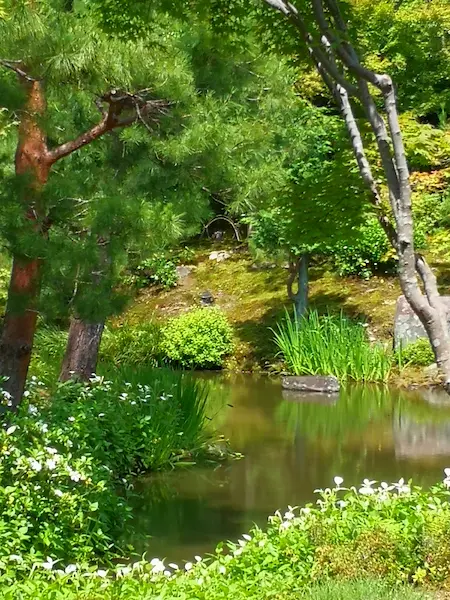
Toji-in Temple (等持院)
History Toji-in Temple is a temple of the Tenryuji school of the Rinzai sect of Zen Buddhism. Although the temple has a long history and is close to Kinkakuji Temple and Ryoanji Temple, it is quiet tourists rarely visit here. Ashikaga Takauji, the first shogun of the Muromachi Shogunate, invited the monk Muso Kokushi and…
-
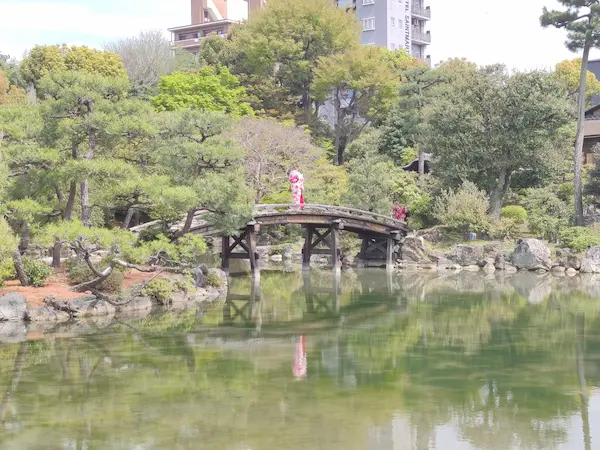
Shoseien Garden (渉成園)
Shoseien Garden is a garden managed by Higashi Honganji Temple, where the third shogun, Tokugawa Iemitsu, donated the land in 1641 and created a garden with the style of Ishikawa Jozan. In 1936, the garden was designated a national place of scenic beauty. Official WEB site This garden creates an oasis in a busy district…
-
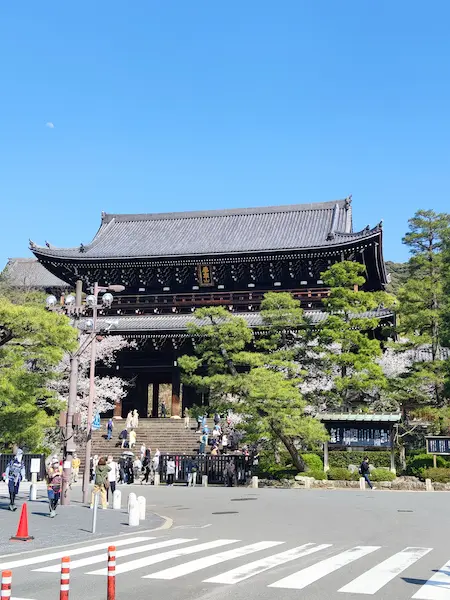
Chion-in Temple (知恩院)
Chion-in Temple is the head temple of the Jodo sect. Chion-in Temple is where Honen, the founder of the Jodo sect, established a hermitage in 1175 and began to propagate Nembutsu (the recitation of the Nembutsu prayer). In the Edo period, Tokugawa Ieyasu, Hidetada, and Iemitsu built the present main hall, Sanmon gate, and other…
-
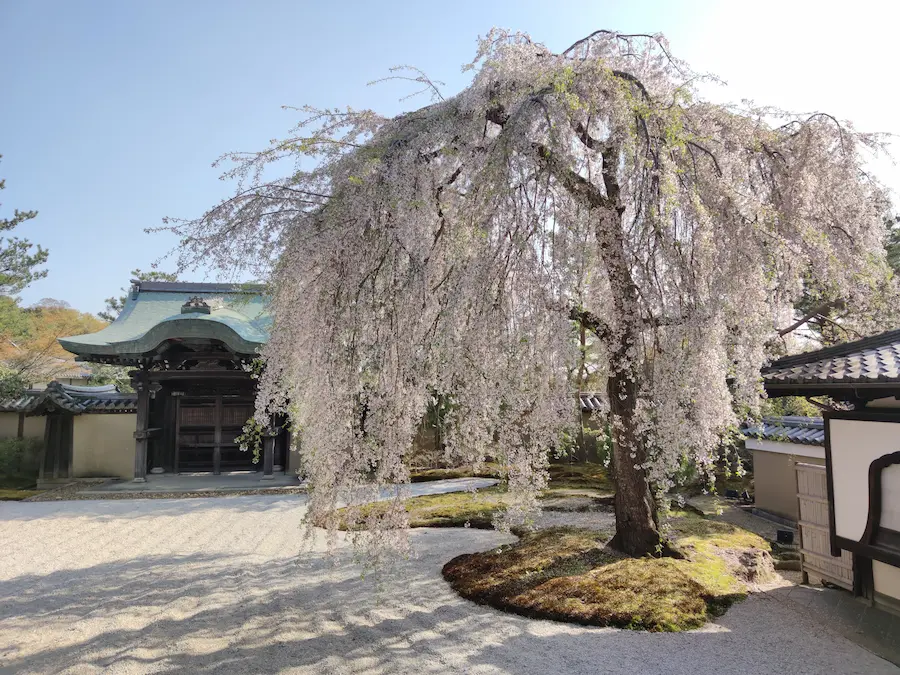
Kodaiji Temple (高台寺)
Kodaiji Temple is located between the famous Kiyomizu-dera Temple and Yasaka-Jinja Shrine, up the mountain side from a narrow path commonly called Nene-no-michi. Temple’s official WEB site History of Kodaiji Temple Hideyoshi Toyotomi’s wife, Nene (Kita-no-Mandokoro) founded the Kodaiji Temple in 1606 as a place of mourning for Hideyoshi. There are many important cultural assets…
-

Entoku-in Temple (圓徳院)
Entoku-in Temple is a temple of the Kenninji School of Rinzai Zen Buddhism located in Higashiyama-ku, Kyoto. It is a sub-temple of Kodaiji Temple. It is known as the place where Hideyoshi Toyotomi’s wife, Nene, made her own residence in her later years and is also said to be the place of her demise, according…
-
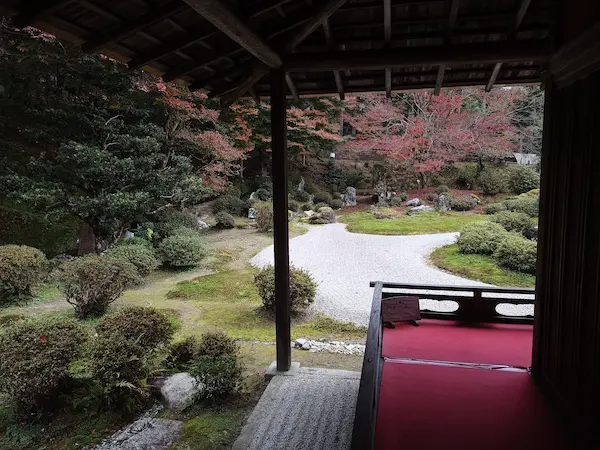
Manshu-in Temple (曼殊院)
Manshu-in is a monzeki temple located in Ichijodani. From Enkoji Temple, you will pass through a residential area and walk along a path called Manshuin-do (Manshuin Road), which leads to a wooded area. After passing through there, you will see Manshuin Temple. Manshu-in was originally opened by Saicho as a dojo on Mt. Hiei. It…
-

Heian Jingu Shrine (平安神宮)
Heian Jingu Shrine was built in 1895 to commemorate the 1,100th anniversary of the transfer of the capital to Heian-kyo and to worship Emperor Kanmu, the creator of the Heian-kyo Capital. The shrine was not built in the Heian period. At the time, Kyoto was in a state of decline. The city was devastated by…
-
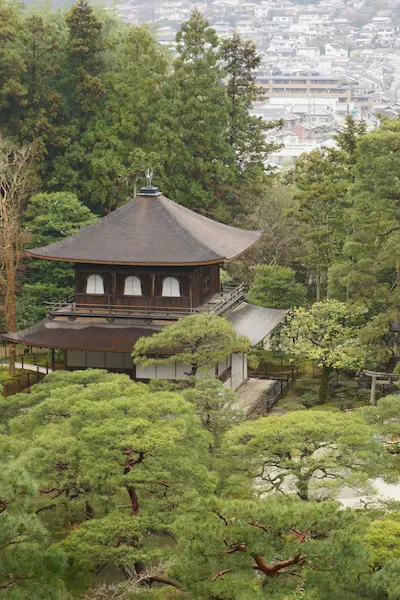
Ginkakuji Temple (銀閣寺)
The official name of Ginkakuji Temple is Higashiyama Jishoji Temple, one of the sub-temples of Shokokuji Temple. Ginkakuji is based on Higashiyama-den, a villa built by Ashikaga Yoshimasa, the 8th Shogun of the Muromachi Shogunate. It became a temple after Yoshimasa’s death. Shokokuji Temple Official WEB site (English page) The common name “Ginkaku” (silver pavilion)…
-
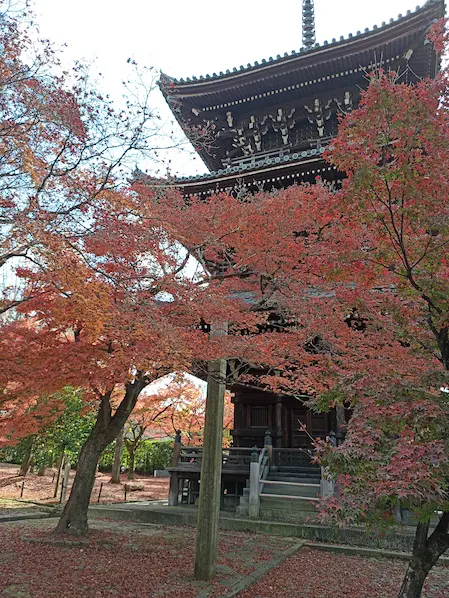
Shinnyo-do (真如堂)
When you pass through the north gate of Konkai Komyoji Temple, Shinnyo-do Hall is immediately ahead of you. Its official name is Shinsho-Gokurakuji Temple. It is a temple of the Tendai sect, with Hieizan Enryakuji as its head temple. And it was founded in 984. Its common name, Shinnyo-do, refers to the main hall. The…
-

Eishoin Temple (栄摂院)
Nestled along the enchanting path from Konkai-komyoji Temple to Shinnyo-do Hall, Eishoin Temple beckons with its vivid vermilion-lacquered entrance gate. A hidden gem among the sub-temples of Konkai Komyoji, Eishoin was crafted in 1589 by Morikatsu Kimata, a loyal vassal of Tokugawa Ieyasu. What truly captivates visitors is the intimate autumnal spectacle of Eishoin’s garden,…
-
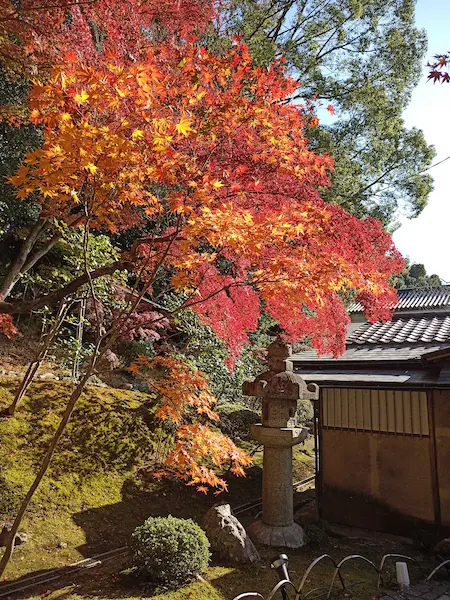
Konkai Komyoji Temple (金戒光明寺)
Konkai Komyoji Temple is one of the seven head temples of the Jodo sect of Buddhism. And it is said to have been built by Honen in 1175. At the end of the Edo period, this temple became the headquarters of the Aizu han (feudal domain). Aizu han was appointed as the guardian of Kyoto,…
-
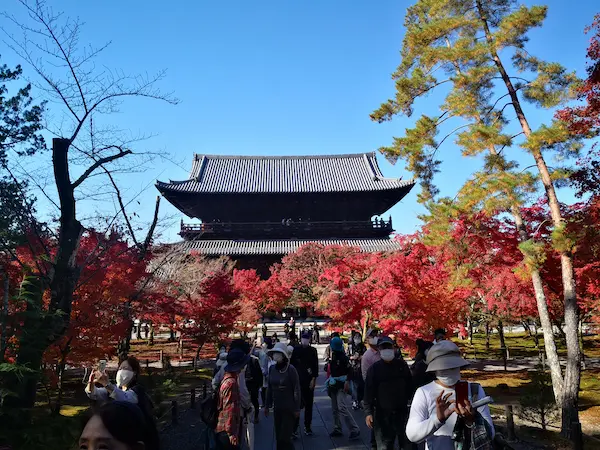
Nanzenji Temple (南禅寺)
Discover the timeless allure of Nanzenji Temple in Kyoto, founded in 1291 by Hōhō Kameyama. Renowned in the Zen sect, the temple’s vast Sanmon Gate, an important cultural property, impresses upon arrival. Ascend to its upper floor for panoramic views of Kyoto. Free entry to the temple grounds unveils captivating scenes—cherry blossoms in spring, green…
-
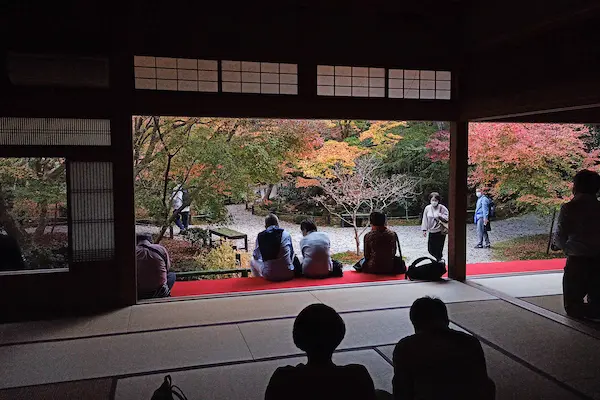
Enkoji Temple (圓光寺)
Enkoji Temple was originally opened by Tokugawa Ieyasu in 1601 as Enko-ji School in Fushimi, and was moved to its current location in Ichijodani in 1667. Cultural assets in the temple include a six-panel screen depicting bamboo groves by Maruyama Okyo (Important Cultural Property) and 50,000 wooden typefaces produced in the early modern period (Important…
-
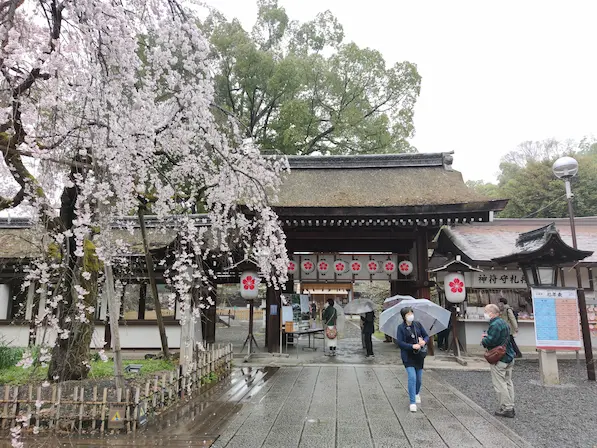
Hirano Jinja Shrine (平野神社)
Hirano Jinja Shrine is famous for its cherry blossoms. Admission to the garden with many cherry trees is charged during the flowering season. The area around the main shrine (an important cultural property) is free all year round. The origin of Hirano Shrine is old. It was originally built in the Heijo-kyo Capital (Nara). The…
-
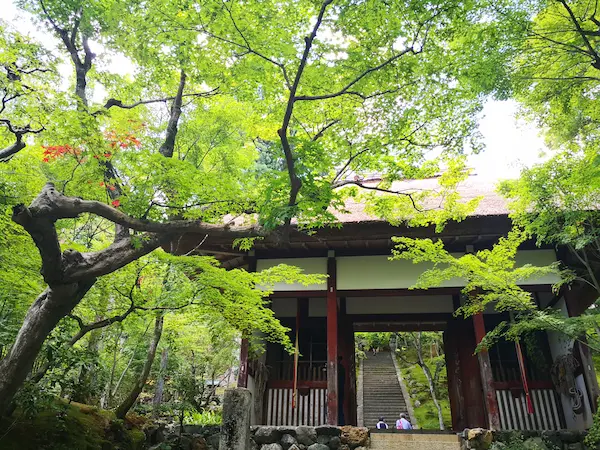
Jojakkoji Temple (常寂光寺)
The area around Jojakkoji Temple is quiet as if it were another world. It is just a short walk from Arashiyama, which is always crowded with tourists. Jojakkoji Temple is a Buddhist temple located in the scenic Saga district. It is on a forested Ogurayama mountainside, offering stunning views of the surrounding landscape. The temple…
-
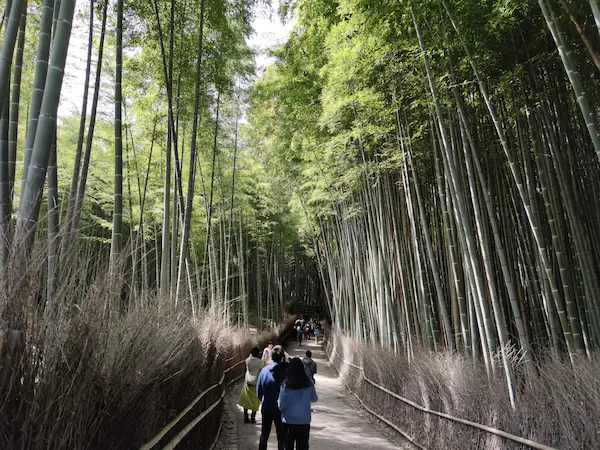
Arashiyama Bamboo Forest (嵐山竹林の小径)
Walking through the Tenryuji garden and out the north gate is the famous Arashiyama Bamboo forest path (Bamboo Walkway). It is a shorter distance than you might imagine, but it is beautiful, lined with tall bamboo. Kyoto City Official Travel Guide Arashiyama Bamboo forest is always crowded with tourists, making it difficult to get good…
-

Tenryuji Temple (天龍寺), Arashiyama
Tenryuji Temple in Arashiyama is one of the World Heritage Sites in Kyoto. It is the head temple of the Tenryuji School of Rinzai Zen Buddhism, founded by Ashikaga Takauji and Soseki Muso. The temple was built to mourn the loss of Emperor Godaigo, who was an enemy of Ashikaga Takauji, so to speak. Before…
-
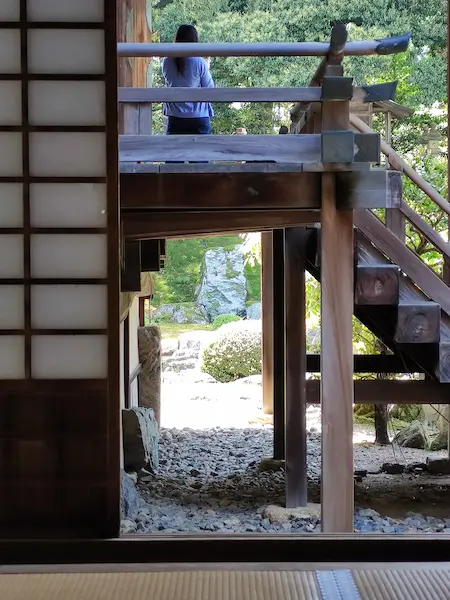
Sanboin Temple (三宝院), Daigoji Temple
It’s history Sanboin, the sub-temple, is entered from the side of the Daigoji Temple reception desk. Sanboin was built in 1115 and served as the main temple where the head priest of Daigoji resided. The present facility was developed after Toyotomi Hideyoshi’s cherry blossom viewing in Daigo in 1598. The garden was basically designed by…
-
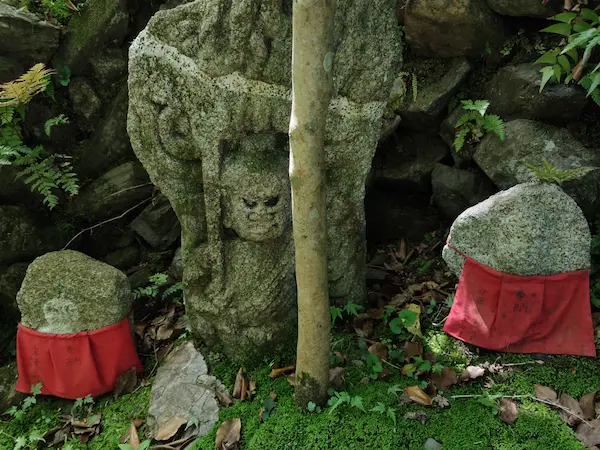
Anrakuji Temple (安楽寺)
Anrakuji Temple is a temple of the Jodo sect of Buddhism. In the Kamakura period (1185-1333) Two of Honen’s disciples, Juren and Anraku, built a hermitage as a place to practice Nembutsu (the recitation of the Lotus Sutra). Honen-in Temple near Ginkakuji Temple is said to have been built on the site of this hermitage.…
-
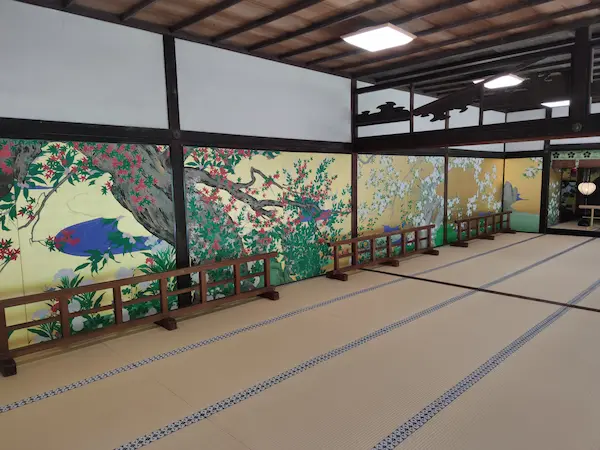
Chishakuin Temple (智積院)
Chishakuin Temple in Kyoto is the head temple of the Chizan School of Shingon Buddhism. Originally it was in Wakayama Prefecture as one of the sub-temples of the Daidenpoin Temple. Later it was rebuilt in Kyoto in 1598 after a war. Garden Chishakuin Temple has a famous pond garden facing the Daishoin (main drawing room).…
-

Kyoto Imperial Palace (京都御所)
The Kyoto Imperial Palace is open to the public all year round. As a rule, the Palace is closed to visitors every Monday, during the year-end and New Year holidays, and when other events are held. Present-day Imperial Palace (Kyoto Gosho) is often thought of as the Daidairi (imperial residence) of Heian-kyo period. But this…
-

Nijo Castle (二条城)
Nijo Castle was built in 1603 by Tokugawa Ieyasu to guard the Kyoto Imperial Palace and provide lodging for shoguns traveling to Kyoto. 1611 saw Toyotomi Hideyori and Tokugawa Ieyasu meeting at Nijo Castle, and the third shogun, Tokugawa Iemitsu, undertook extensive renovations for Emperor Gomizuo’s visit to the castle, including the Ninomaru Palace, which…
-
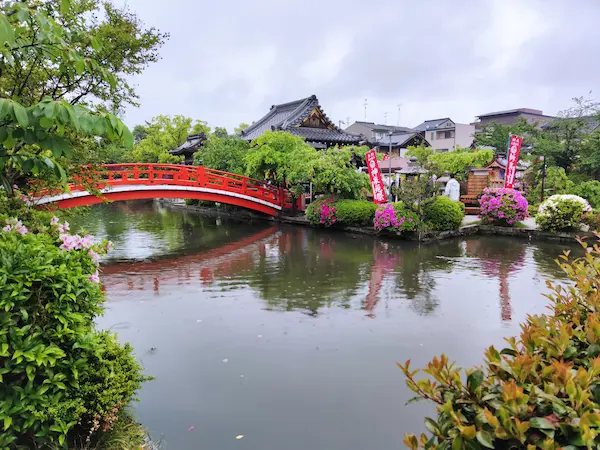
Shinsen-en (神泉苑)
Shinsen-en was a garden pond adjacent to the Daidairi (Imperial Palace) soon after the construction of the Heian-kyo Capital. But it was reduced in size during the Edo period (1603-1868) with the construction of Nijo Castle. Later it became a temple and Toji Temple manages it now. The following is an excerpt from the Shinsen-en…
-
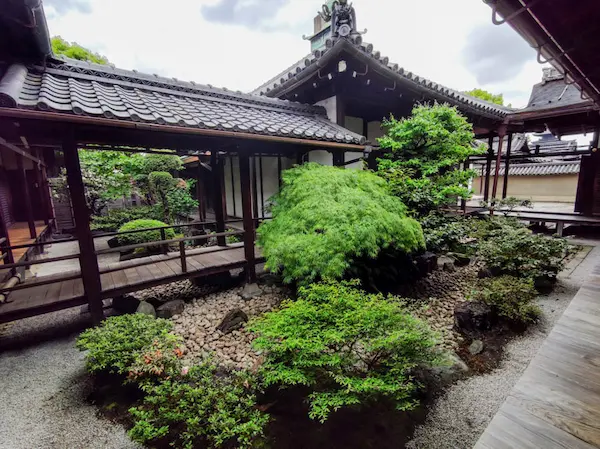
Kanchi-in Temple (Toji) 観智院
Kanchiin is one of the sub-temples of Toji Temple. It is just inside the Kita-Soumon gate (an important cultural property) of Toji Temple. The path from the Kitasomun is called Kushige-koji, which is said to be the very width of the road in ancient Heiankyo Capital. Kanchi-in is a Shingon school temple. The entrance is…
-
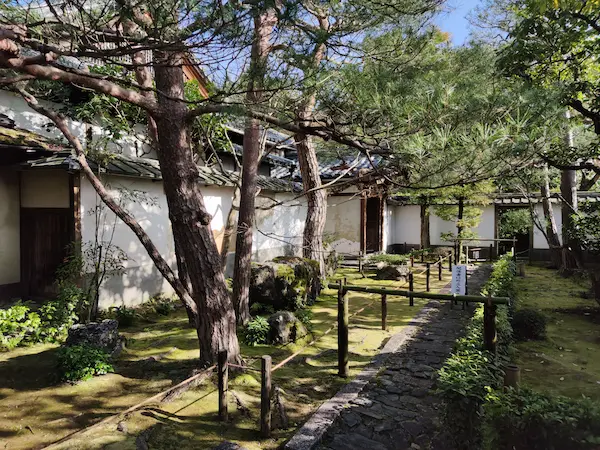
Keishun-in (Myoshinji) 桂春院
Keishun-in Temple is a sub-temple of Myoshinji Temple. Keishun-in Temple was founded in 1598 by Hidenori Tsuda, the second son of Nobutada Oda, the eldest son of Nobunaga Oda, as Gisei-in Temple. The sliding door paintings in the hojo are by Kano Sansetsu. The tea ceremony room, Kihakuan, used to be in the Nagahama Castle…
-
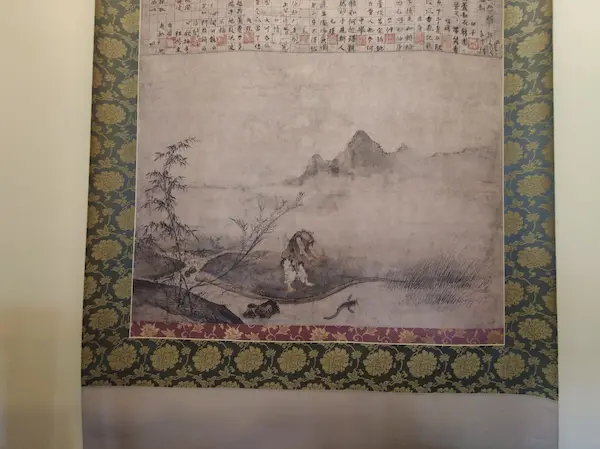
Taizo-in (Myoshinji) Temple 退蔵院
One of the sub-temples near the Myoshinji Butsuden is Taizo-in Temple. This temple is home to the National Treasure “Hyonenzu,” the historic site and place of scenic beauty “Motonobu’s Garden,” a dry landscape garden, and the pond garden “Yokoen,” a garden with a circular garden. Unfortunately, Hyonenzu is not open to the public and you…
-
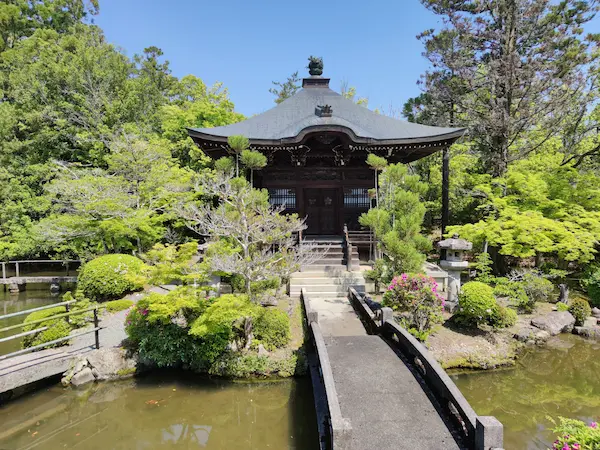
Seiryoji Temple (清凉寺)
Seiryoji Temple, also known as Saga Shakado in Sagano, is a cultural gem awaiting discovery by foreign tourists. Home to the revered Shakyamuni Buddha statue, a national treasure from India, the temple unveils this sacred artifact during special visits. The temple’s origins trace back to Seikaji, the model for Hikaru Genji’s “Saga no Godo” in…
-
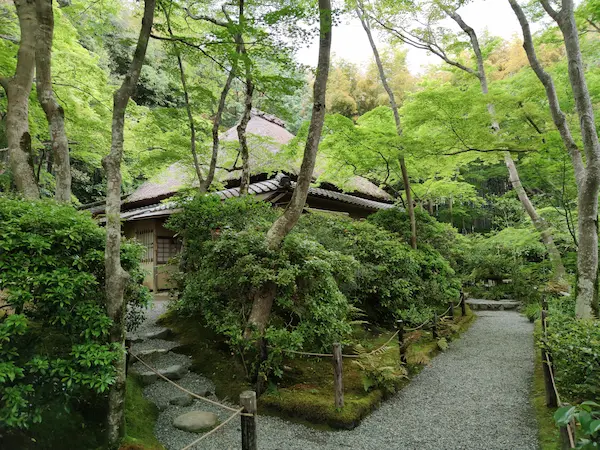
Gioji Temple (祇王寺)
Gioji Temple, a nunnery in green and tranquility According to the Tale of the Heike and the Genpei Seisuki, Gioji Temple is where Shirabyoshi (dancer) Gio became a nun at the then Saga Oujoin Temple along with his mother Toji and sister Kojo. Taira no Kiyomori once favored her but later treated her coldly. That’s…
-
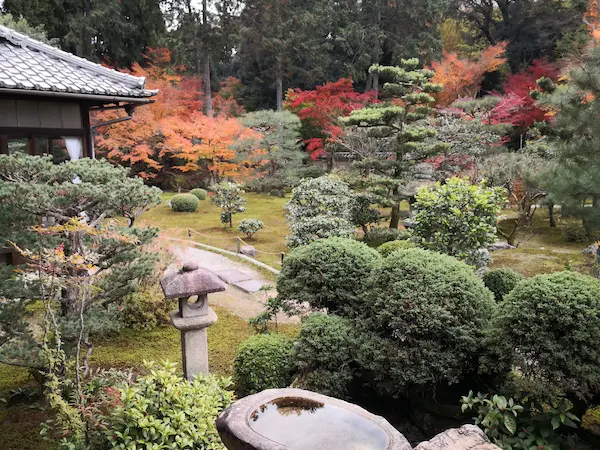
Sokushu-in Temple (即宗院)
Nestled within the embrace of Kyoto, Sokushu-in, a sub-temple of Tofukuji, boasts a storied history dating back to 1387. Originally built in memory of Ujihisa Shimazu, it was resurrected by Iehisa Shimazu in 1613 after a fire in 1569. A testament to resilience, the temple features a gate from its reconstruction. The Sokushu-in Garden, once…
-

Tofukuji Temple (東福寺)
Tofukuji Temple is the head temple of the Tofukuji School of the Rinzai Sect of Zen Buddhism, and was completed in 1255. The Sanmon Gate is a National Treasure, and there are many other important cultural properties including the Zendo Hall. Tofukuji official WEB site The Sanmon Gate is the oldest and largest of the…
-
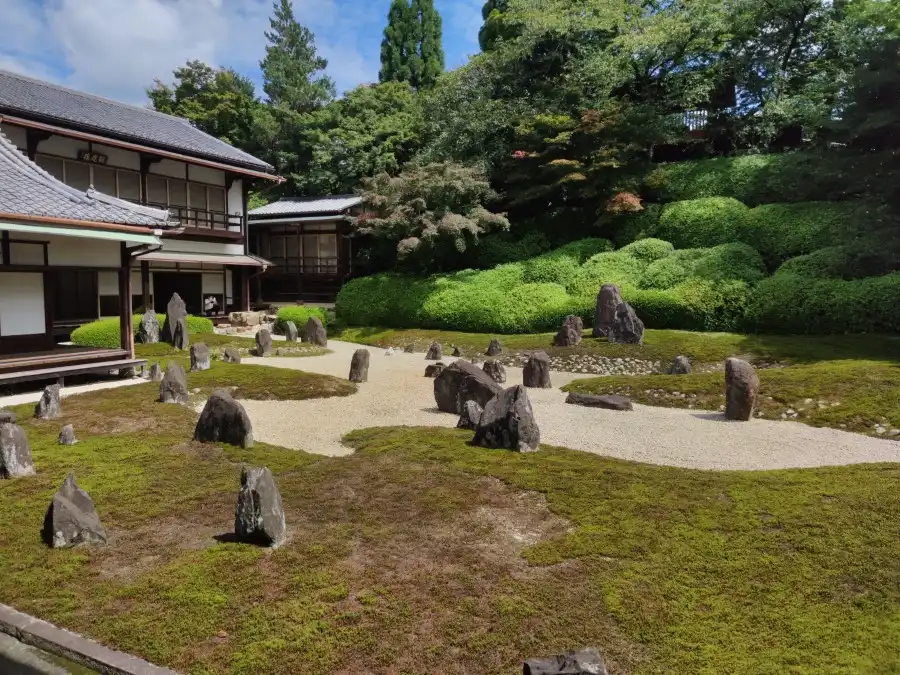
Komyo-in Temple (光明院)
North of Nanmei-in is Komyo-in, also a sub-temple of Tofukuji Temple. Komyo-in was founded in 1391, at the beginning of the Muromachi Period. Temple’s official WEB site Komyo-in Gardens Visitors can see the “Hashin-tei” garden by Mirei Shigemori, a famous Showa-era gardener. He created this garden together with the Hojo gardens of Tofukuji Temple in…
-
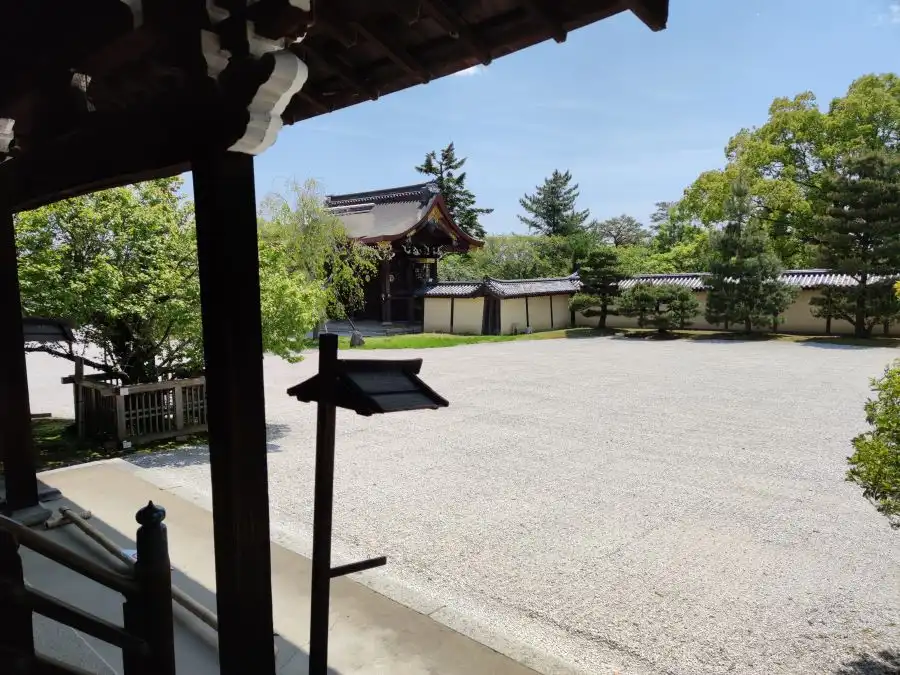
Daikakuji Temple (大覚寺)
Experience the serenity of Daikakuji Temple, the majestic head temple of the Daikakuji School of Shingon Buddhism in Kyoto. Originally Emperor Saga’s detached palace, the temple boasts a unique shinden-style architecture dating back to the Heian period. Explore the hall area, including the exquisite shinden and shoshinden, relics from the Edo period. Wander through the…
-

Ryoanji Temple (龍安寺)
Founded in 1450 by Katsumoto Hosokawa, Ryoanji Temple in Kyoto captivates with its iconic karesansui (dry landscape) rock garden, created around 1499. Comprising 15 precisely arranged rocks in white gravel, the garden embodies Zen Buddhism principles—simplicity, harmony, and abstraction. A single rock remains hidden, sparking contemplation. The tranquil setting, free from trees and plants, fosters…
-
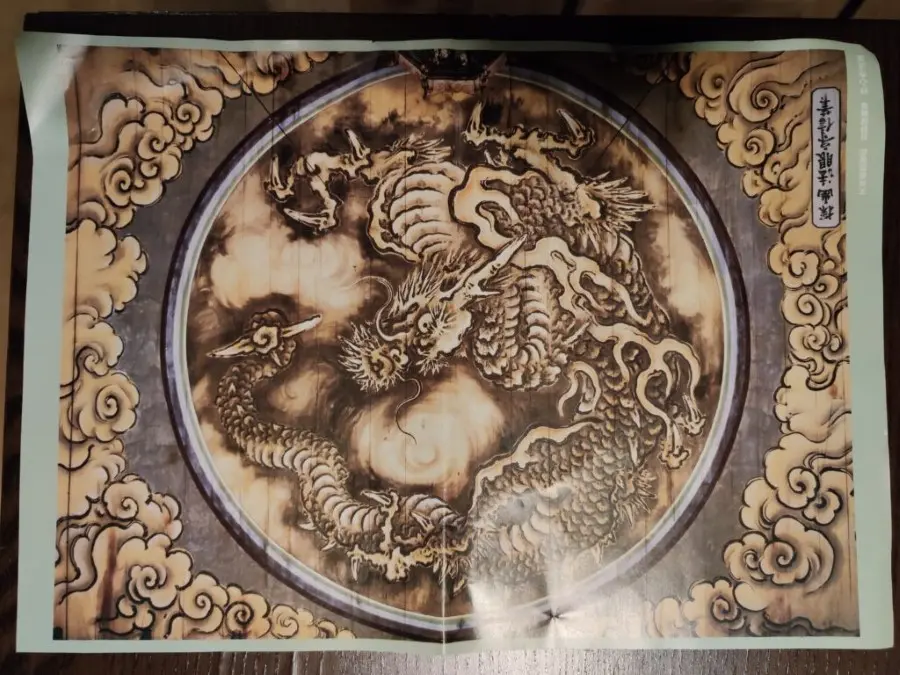
Myoshinji Temple (妙心寺)
Myoshinji Temple is a renowned Zen Buddhist temple located in the northwest part of Kyoto. It is the largest temple complex in the city of Kyoto and serves as the headquarters of the Myoshinji school of the Rinzai sect of Zen Buddhism. Founded in 1337 during the Kamakura period, Myoshinji Temple has a long and…
-
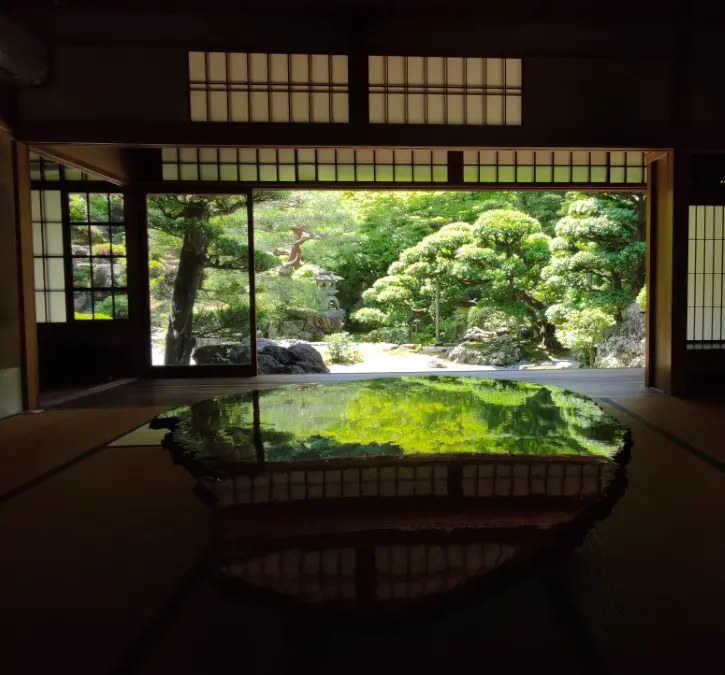
Kyutei Omuro (旧邸御室)
Kyutei Omuro, also known as the Omuro Residence, is a historic, traditional Japanese house. It is in the vicinity of the Ninnaji Temple in Kyoto. This house was built in 1937. And it is a Sukiya style architecture with magnificent decorations. Although this building has a short history, it is representative of Kyoto’s architecture and…